Archive for the 'Moving Day' Category
By Relocation.com
When you sign a lease agreement, most likely you’ll be signing on for a set period of time, such as six months or one year. That means you’ll have to stay on for this amount of time or risk breaking your lease.
While many people do intend to stay long-term in their apartments or homes (after all, moving all the time can be costly) there are some unforeseen circumstances where you might be forced to break your lease before it us up, such as illness, job loss or other emergencies. If you absolutely have to break your lease agreement, here are some of the things you should consider.
Alternatives:
Before you try breaking your lease, there may be other things you can do first. You can ask your landlord if you can transfer the lease to someone you know (and have them move in and pay off the remaining rent for the lease term) or find a sub letter, who will be your responsibility for the time of the lease. In many cases, landlords hate breaking lease agreements because they don’t want to lose the income from the rent and/or don’t want to be bothered with having to look for tenants. If you make it as easy as possible for them, you may be able to get out of your lease unscathed.
Circumstances When You Can Legally Break Your Lease
There are three main circumstance wherein you can break your lease without penalty:
1) If the apartment or whom suffers serious damage through natural disasters, crime or other instances through no fault of your own.
2) If you suffer serious health issues which require you to live in an assisted living facility.
3) If you are called into active military duty after you’ve signed your lease
In these three cases, you can legally break the lease and your landlord cannot go after you for penalties.
Landlord Deficiencies:
If your landlord has been deficient in his or her duties, then you can also break your lease since he or she is not keeping up their end of the bargain. For example, if you’ve repeatedly sent requests for repairs and they ignore you, or if they’re supposed to pay for the utilities but haven’t (or have been keeping the payment for themselves if you give it to them) then you have just cause to break your lease. Make sure you keep good records (like written or e-mailed requests for repairs, etc.) so you can make your case, in the event that you have to go to small claims court or have been served with other legal documents and actions.
If you just want to break your lease because you want to move somewhere else, because you can’t pay or perhaps going through a divorce or separation, you may find it harder to break your lease. However, first talk to your landlord and offer the aforementioned alternatives, that way you can have a peace of mind when you coordinate other aspects of your move like locating moving companies.
By Relocation.com
For seniors and elderly people, moving can be a difficult time. There are many reasons why they need to move – illness, downsizing, or perhaps just moving in with another relative. If you’re helping an elderly friend, relative or parents move, then you have to be sensitive to their situation. Aside from that, moving can be stressful, and someone older may not be able to deal with the physical and mental stress, so try to help as much as they can. So, try to keep these tips in mind when helping the elderly move.
Start As Soon As Possible:
Starting as soon as you can will ensure you’re not rushing and that you won’t forget things. You can start by planning things out. Work out the important details first – the where, when and how before you even being to pack up moving boxes. Try to get some help or get a moving company to help you if the work really is too much. This will save you time in the long run and you’ll have more time to devote to your elderly person’s emotional and physical needs, rather than running around trying to move everything yourself.
Don’t Forget the Non-Material Things:
There are some essentials you can’t pack up in a box, so don’t forget to arrange for them. Medical and dental records are probably the most important, but also remember prescriptions and bank accounts, some of which can only be done by the person. You may have to take time to drive them around and get these switched to the new address.
Help Them Downsize:
Over the years, he or she may have acquired a lot of things. Chances are, not all of them are important, and some may have to be sold or thrown away. Help them sort things out. You can have a pile for throwing away, giving away, keeping and selling at a yard sale. This will also ensure that they can save some money on the move.
Take Care of Keepsakes:
Of course, there will also be some things that he or she may want to keep, such as photos, jewelry and other keepsakes. Take extra care of these as these may or may not have monetary value, but they certainly have sentimental value. Don’t pack them with the movers and keep them with you at all times.
Keep Them in the Loop:
Your elderly friend, relative or parent move, don’t keep them in the dark. You may think you’re that you’re protecting them or you think it’s not important, but they may feel confused or resentful if you keep things from them. Tell them all the details, like how you’re going to move, which moving company you’re using, and also take them through the details of moving day so they know what to expect.
Keep Essentials With You:
Don’t pack everything away – there may be some things they’ll need on the day of the move. Medications, sweaters, blankets – these may be some items that they need and will keep them comfortable during the move.

Image Credit: MyMove.com
By Dawn Allcot, Guest Blogger
More than 12 million unmarried people in the US have moved in with a significant other, sometimes as a predecessor to marriage—but sometimes not. Either way, combining households presents challenges…on top of all the regular challenges of moving! Follow these tips to make the moving and cohabiting process go more smoothly.
Money Matters When You Move In Together
Couples who talk about money have fewer conflicts, overall. Open discussions about money may prevent messy situations should you decide to break up or end the living arrangement. Here are a few money tips to get you started before you move.
1. Be honest about your finances, including income, expenses, debt and your credit score. If you’re buying a home or leasing an apartment together, this is mandatory. But it can also affect day-to-day living if one partner isn’t honest about their salary and then cannot afford their share of the expenses.
2. Decide how you will split expenses. There are many ways to manage money when you’re moving in with a significant other. 50/50 split, much like roommates? Joint bank account for household expenses? Or something else? If a break-up occurs, what happens to items purchased while you were together? Married couples have legal rights, but when you move in with a significant other, you both get to lay down the law.
2. Know your rights. In some cases, domestic partners are entitled to health insurance. Does your partner have a living will—and do you have the legal right to enforce it? Do you have power-of-attorney if something happens to your partner? It’s important to consider these things before moving in, especially if the relationship is serious.
Yours, Mine, Ours?
Three more tips for moving in with a significant other:
1. Discuss chores. Couples in one study reported that they fought more frequently about taking out the garbage than about money. You may not go as far as creating a chore chart as roommates might, but definitely discuss who will do what around the house.
2. Discuss how to divide personal space. Whether you’re moving in to a new apartment or home, or if one of you is moving in to the significant other’s existing space, decide how that space will be shared. Is it okay if his 800-watt stereo system makes its home in the formal living room? Will there be a man cave? Where will the crafting supplies go? Even in small apartments, you’ll want a space to call your own.
3. Decorate so the space reflects both of you. Having a discussion about the décor—and redecorating, if necessary—can prevent one partner from feeling as if they are a visitor in their own home.
This philosophy of remembering that the space belongs to both of you is the most important key to successfully moving in with a significant other.
This article was provided by MyMove.com, an online resource where you can find the information, products and moving coupons you need to streamline and save during a move.

By Relocation.com
When moving to a new house, packing electronics require more attention compared to, say, your furniture. Electronic appliances need careful packing as they are fragile. They are also sensitive to dust, moisture, magnetic fields, pressure and vibrations. Pack them well to ensure you still get to use them (and they remain in tiptop condition) in your new home. Here are some of our tips:
Pack sets together. Some electronic equipment, for example stereo components and movie theater systems, come in sets. Make sure that you pack the sets together. If you accidentally misplace a part, you might be left with a hi-fi system that’s missing one speaker. You should also pack all the corresponding wires and peripherals together with the main system to save yourself the trouble of sorting them out again later.
Use moving boxes for storage. If you haven’t disposed of them yet, use the original moving boxes and paddings, otherwise sturdy corrugated carton boxes bought from the store or provided by the mover will serve the purpose.
Draw a diagram of the wiring. For reference in re-connecting wires and cables between components, draw a diagram of how the wires are hooked up to their corresponding terminals on the device. Note down the color coding scheme or attach matching tags to each wire-terminal pair. Bundle wires and cables securely and label them but do not bind or roll them too tightly to avoid internal damage. Optical fiber cables can easily break.
Secure loose/moving parts with masking tape. If you have a vinyl record player, disconnect the stylus assembly from the tone arm, put it in a small box and tape the box under the tone arm. Fix the turntable to the base with tape to prevent its movement and tape the tone arm to its rest. Lastly close the turntable cover and tape it to the base. Put small hardware items such as screws, nuts and bolts inside a plastic bag and tape the bag to the component where they came from.
Always label “FRAGILE, ELECTRONICS” on the sides and top of each box. When necessary put a “THIS SIDE UP” label on the sides of the box. It goes without saying that cargo items should be tagged with the name and address of the owner.
Before and during the move, keep components away from sources of liquids, wet surfaces, and strong magnetic fields. Provide water-damage protection by placing components inside plastic bags before packing them in boxes.
Pack to protect fragile parts. For components subject to risk of breakage or scratches like TV screens or computer monitors, pack them in such a way as to minimize stress or pressure to the delicate parts. Provide appropriate padding or spacers such as thick cardboard or styrofoam boards or pellets.
Cover speakers. Speaker units also need to be protected from possible dents to the cabinet and the acoustic cones. Cover the front of the cabinet with cardboard and wrap it over and around the edges. For heavy units, it’s a good idea to bind the box with packing tape to prevent bursting and tie it with heavy cord to provide handles for lifting.
Make sure the moving service company drives with care! Check whether the moving company has insurance coverage against loss or damage to cargo.
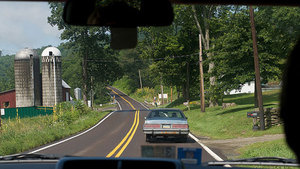
Pass the time when moving in a car with some of these creative activities
By Richard Farrell
Special to Relocation.com
Moving across the country in car is one way to save money. However, when you add kids into that mix you have to consider that they may get bored – especially when you will be driving for hours on end. Check out some of our creative solutions to make it easier to get to your new home when driving.
Planning the Trip:
- Once you have chosen your route, it is time to calculate how long you are going to be a passenger or driver in the car. Allow for unforeseen delays such as traffic backlogs and diversions along the way. Once you know your likely journey time you can plan around it better.
- Pack a cooler of healthy snacks and lunch options for your initial ride. Once you get on the road, plan to use drive-through food outlets along the way as this will save a lot of time. Keep a couple of trash bags handy for any garbage.
- Wear sensible clothing and shoes for the journey. Choose comfortable shoes and clothing that are easy to slip off so that you can relax and let your feet breathe. Long trips will likely result in posture issues and your feet will soon remind you of the fact that you are not comfortable. Shoelaces are not practical in these circumstances.
- Should you be sharing the driving, do make sure you stop in a safe place and take time out to walk about and do some breathing exercises before you take the wheel. Include some stretching exercises too..
- Consuming of alcoholic beverages immediately before or while traveling makes for another definite “no.” Apart from affecting your reaction time it is breaking the law and your journey to your new destination will be remembered for all the wrong reasons!
7 Fun Tips to Pass Time in a Car:
- Bring CD’s. Sort through your CD collection and pick out some favorites and maybe a couple that you have not played for some time.
- Radio. Satellite radio played through your car sound system is of excellent quality and clarity. Tune in to your favorite stations before you set off.
- Books and Magazines. Kids love books and magazines. Make sure you have plenty for the journey.
- Music DVD’s. You may be lucky enough to have a sophisticated in-car system. If not, then there are plenty of good quality portable players for you to enjoy the latest movie offerings as well.
- Take Naps. Short napping is good, but sleeping the entire journey may be considered antisocial, and besides you will be missing the passing scenery and could arrive feeling less than your best.
- Food. Choose snack food that does not make a big mess. Dry snacks such as chips and peanuts or glazed dry fruit are great for the car. Avoid too much intake of food and drink or you will be stopping at every restroom along the way.
- Rotate Drivers Regularly. This is very important for long journeys. If you are the only driver you will need to consider breaking your journey with an overnight stop. In any event, do stop every 90 minutes but make sure you pull over in a safe place.



Moving can be positive - especially when you are moving into a bigger home.
By Dermound Becker
Special to Relocation.com
Just the thought of having to plan, organize, sort out, downsize and then pack everything into cartons and boxes can be daunting, but there are some positive aspects of moving that are both invigorating and exciting.
You can afford to buy a home. The most common reason for moving is when you can finally offer to transition from renting to buying. This is a huge step in the right direction to financial independence – and will most probably be the best financial move you will make in your lifetime. If one is able to purchase a property with a monthly mortgage repayment similar to the amount you are paying to rent, the net result is that you are basically paying yourself the rental amount and, one day in the future, when the mortgage is paid off you will have your own home and be able to live rent free for the rest of your days. This would clearly be a good change in your lifestyle.
You are moving for a new job. Another common reason why moving is exciting is when you have to relocate for a business or career. This might mean an increase in salary, a rise in one’s status, a chance to improve oneself and move up the corporate ladder. This would also mean a positive change in how you live and what you are able to afford.
You need to downsize. At the other end of the scale, people move when they find that they simply cannot afford to continue living where they are due to rising rents or mortgage repayments or the loss of a job. All is not lost though, as a move to a smaller residence or to a home of equal size in another, less expensive, neighborhood can also be a change for the good. There will be less keeping up with the Joneses and less overall expenses, thus freeing up money for things that you would like to do, such as being able to take a vacation, taking up a sport or hobby and having some spare cash to go to a restaurant or movie. Moving for these reason will encourage you to join clubs or volunteer for a good cause in your area in order to meet new people; and to spend time either alone or with your family while you explore and learn all about your new location – proof that change is good.

Follow our tips to successfully move for work
By Maria Paulia Belgado
Special to Relocation.com
Moving for work sounds exciting but can also be quite overwhelming and frightening. There are several questions that occur to ones mind about getting started. There are several tips and tricks to that will ensure that your move is hassle-free. Here are some to-dos that will help you smoothly move for work.
Ask the Employer About Relocation Packages.
If you are moving for a particular employer, you must check about the benefits the company provides for moving. Will they be reimbursing you for all or part of the costs such as the moving companies fees? Plus, they may already have existing relationships with movers who have great offers and provide discounted rates.
Choose Good Realtors to Find Your House.
Experienced realtors will provide you proper estimates, and also give you details about the time that the entire process will require. Choose realtors who are ready to provide you homes that suit you needs and preference. Do not fall for agents who suggest high priced properties. The house you choose should be in sync with the recent sale price of the locality you choose.
Consider Location and Proximity.
If you are moving for work, you must look for living areas that are close to your offices. Do some research and find the local rates. You may have a job that pays a great salary but if the houses near your new office are more costly, you will be burning your notes anyways.
Make Some Preview Visits.
Moving can be really stressful if you don’t know where you are going. You must be familiar with the new locale. Preview trips will ease your stress and make you feel comfortable. You may also end up enjoying some great shopping.
Decide Your Specifications.
People living with families will require quick accessibility to hospitals and schools. Find out the presence and distance of these facilities from your new home. If you do not have a personal vehicle, you must find about the frequency of public transport in the neighborhood.
Make Travel Preparations.
After your move date has been finalized, book your tickets accordingly. If you are moving with pets make sure you are aware of the airline laws and litigation’s. You must have all those necessary objects at hand that you may require, while in transit. Keep the new destination’s weather and climatic conditions in mind before you pack your hand luggage. Keep the required documents and keys properly labeled and handy.
Think About Minute Details.
You can not move into a home which has only walls. You must look for places which are somewhat furnished or at least have stoves and ovens. If that is not the case, make sure your realtor sets them up on your arrival. You must also make sure that you have turned off or disconnected services like electricity Internet connections, gas and television for your old home. You must also have the numbers of fire stations and trauma centers before you step in your new house. Provide all your contacts and banks with your new address.
Following these simple yet important steps will help you move for work with complete peace of mind.
Don’t forget to like us on Facebook and follow us on Twitter!
• Follow us on Twitter @Relocation_News
• Become a fan of Relocation.com on Facebook

Moving with a teenager doesn't have to be difficult. Check out our tips for making this move easy!
By Dermound Becker
Special to Relocation.com
The stresses, strains, upheavals and turmoil of moving are difficult enough, but when you add teenagers to the mix, chances are things will be even more complicated. Not only do teenagers have raging hormones and pendulum-like mood swings, they generally, do not react well to change. When a family moves, they will have to leave everything that is safe and comfortable including their school, sports and other extramural activities and, most importantly, their friends. This could be a recipe for catastrophe, if it is not handled with a delicate hand and a lot of understanding.
The most important step to inform your family that you will be relocating to another area early on. Sit down with them and explain the reason for the move – whether it is for financial reasons or a new job. The main thing is to be honest and direct with your teens. Many teenagers feel that they are already adults and therefore need to be consulted on such a momentous decision; others will suddenly feel that they are not yet adults at all and will feel very vulnerable to the consequences of the move.
Throughout the process of planning, organizing and packing, take the time to listen to what your teenager has to say. Having a sympathetic ear may just be the lever needed in order to get him or her to get involved with the move, start sorting their possessions and maybe even begin packing a few boxes of their own. You may be surprised to learn that your teenager may even relish the thought of a move, if perhaps his or her current peer group is a bit boring and they actually need a change.
If at all possible, try to plan your move at the end of the school year, or at least at the end of a semester, as this will be the least disruptive to your teenager and will have the least impact on their social life and their school work. If you have no choice as to when you have to move and it is very close to the end of your teenager’s school life, think about organismic for him or her to stay with relatives or friends until the completion of their studies.
Another aspect which is imperative when relocating a teenager is to ensure that he or she is not completely cut off from their friends. This means that they should be given one of the latest gadgets to allow him or her to e-mail, tweet, or send MSM messages to keep up with the latest news and to be able for them to report on their new lives. Organize a Skype connection with a camera so that they will be able to see their friends as well.
Finally, if you will be buying or renting a home in the new area, involve your teenager and listen to his or her opinions to make them feel that they are important members of the family and that their opinion is valued.

These tips will make your miliary move easier
By Dermound Becker
Special to Relocation.com
In general, families in the military move from one base to another – and even from country to country – about once every two years on average. Since moving is such a great upheaval it can be especially difficult for military families to cope and manage with the constant packing and unpacking.
As with all moves, basic organization and planning are the keys to a successful and less stressful relocation. Listed below are some tips for military families who have to move often.
The first step is to set up a meeting with the transportation office on the base where you are currently located. During this meeting you will be given certain forms which must be filled in, in order for those in charge of this office to process your details and ensure that you have all the information you may need to, for example, apply for a Dislocation Allowance (an allowance to help pay for all sorts of miscellaneous expenses); for a temporary housing allowance, or for any other of the numerous financial benefits which may be available to your family. You will also be given information on the two ways of making the move, because military families have two programs to choose from when it comes to moving from base to base. One is that the government will actually transport your household possessions for you. The other option is the DIY method. Should you choose to move your belongings yourself, you will be reimbursed about 95 percent of what it would have cost the government to use their moving services.
Along with the planning and organization, families should also downsize and get rid of absolutely everything they don’t need. With clothing, this means anything that you have not worn in the past year. Downsizing will ensure that you do not have to pack and then unpack (and find place for) items for which you no longer have any use. Donate these items to charity, ask friends or family if they would like to have them or, as a last resort, have a garage sale.
For safety and security reasons, keep all your personal important and legal documents with you – do not pack them into boxes for the moving company to take away for transportation.
Take photographs of any of your valuable items so if anything gets damaged or lost, you will have a record of such objects.
Finally, make a list of what you have packed into each and every box and, once they have been sealed, write on them in clear handwriting exactly which room in your new home the boxes need to be put in. This will help enormously when it comes to unpacking and organizing your new home.

Sharing food with your movers is a great way to kick-off moving day.
By Richard Farrell
Special to Relocation.com
On moving day, it is highly likely that your kitchen will be chaotic on move day so preparing and actually cooking food there will not really be practical in most cases. In a perfect world we would love to have the entire moving affair catered with an endless tray of gourmet snacks and dishes. In the real world it is not going to happen like that though, because there are far too many distractions not to mention costs. What are the alternatives then? Greasy Chinese food sounds good or maybe a cardboard pizza, or wait, what about a tasteless sub? None of the above, so why not rather go with the following suggestions:
The quickest and easiest option to purchase ahead of time and share with your moving company.
Here are some food suggestions to keep you and your movers fueled for moving:
1. Colorful veggie and fruit trays. A blend of grapes, bananas, berries and apples will keep you full and energized.
2. Cheeses, crackers, various spreads and cold ham or salami are very to prepare. Have them out for your movers, volunteers, family and friends.
3. Have a variety of frozen appetizers handy that you can quickly heat up in the oven.
4. Chips and dips like salsa and guacamole.
5. Homemade pizza. If you have some time you might want to create something more substantial like homemade pizza…or better yet you can order a pie for the crew.
6. Spaghetti and meatballs. If you have time the night before, make a huge pot of this classic dish.
7. Nachos and chicken wings are quick and easy foods that every mover will love.
8. Desserts. Offer some brownies, Popsicles, cheesecake or ice cream.
9. Drinks. Make sure to have an assortment of lemonade, cold water, tea and coffee for the movers.

Beat the heat when moving over the summer with our simple tips!
By Maria Paulia Belgado
Special to Relocation.com
Moving during the summer is not something that many people look forward to. However, Americans find summers the best time to make a move. It does not matter if you are moving to a nearby location or relocating to a new state – perfect packing is what you need to prevent any kind of property damage. It may seem tempting to pack up all your belongings at the last minute. If you are or have to make a move in summer months, you cannot pack all your stuff in a beach bag and walk away. To make your move better you must begin with better planning. In reality, shipping items via modern freeways require you to pack your belongings with utmost expertise. Here are some summer moving tips for a damage-free and successful move.
Tips for Packing:
Make sure that the bottoms of all boxes are tightly closed. Make sure to label your boxes and create a list of the contents for each box. Fill up all empty spaces in those boxes with fillers to avoid bouncing. Clearly mark boxes that contain fragile objects. Make sure that the ‘FRAGILE’ marked boxes are placed on top of everything. Pad sharp corners to avoid punctures or scratches. Do not send valuables, plants, pets, and basic necessities in a movers’ truck.
Furniture.
All pieces of furniture should be padded with blankets or bubble wrap® and secured tightly. Detach legs of your furniture and pack them in padded materials. Make sure you don’t miss out on screws and bolts. You may even apply a fine coat of wax on your wood furnishings to save them from scratches.
Huge sofas should be placed upright and in the end to reduce space consumption. You can wrap up cushions and place them as packaging between items. Your dressers can be moved with full drawers to evade repacking. However, you must secure drawers to prevent them from opening up.
Electronics.
While moving stereos, computers or TVs make sure you follow company’s instructions and use original boxes. Wrap all pieces in foam or bubble wraps. Make sure wrap up all cords and cables separately but securely. CDs, DVDs and tapes should be protected from direct heat.
Household Appliances.
Refrigerators and freezers must be defrosted and cleaned days before you move. The spaces inside these appliances can be used to store light and fragile objects. All their cords and wires must be removed and placed inside them.
Glassware
All glass items must be wrapped and packed individually strong boxes. You may also purchase “dish packs” to pack your dinnerware. Use soft cloth and silver paper to pack silverware.
Lampshades/Wall Hangings.
Use towels, bubble or foam wraps to pack lamps and wall hangings. Place them in cartons which are reinforced and sturdy. Make sure bulbs are removed from your lamps when they are transported.
Summer generally isn’t the best time to move – it’s hot, uncomfortable to travel and usually more expensive. But if you must move during the summer, keep these tips in mind to beat the summer heat and moving headaches.

By Maria Paulia Belgado
Special to Relocation.com
The United States has had a lot of trouble in attaining a healthy lifestyle. In fact, according to the World Health Organization, the U.S. is considered the 9th fattest country in the world! Although we are packing on the pounds, there are some places in the U.S. that focus on healthy living, exercise and eating. When looking to relocate for health purposes here are the top 5 cities that have tons of health programs and fitness gyms, focus on eating healthy and feature activities that have a good impact on an areas overall well-being and lifestyle.
Salt Lake City, Utah
Salt Lake City is renowned for their love of sports. They continually rank as one of the fittest city in the U.S. for years as residents have access to wide plains and the great outdoors. Residents love to stay healthy by walking and biking and enjoying healthy eating like vegan and vegetarian restaurants.
Colorado Springs, Colorado
Colorado Springs is best known for hiking and backpacking, which puts this city to the second spot of this list. With regards to a healthy environment, pollution is held to a minimum thanks to numerous environmental programs. The city also offers a wide variety of clinics and shops and access to the outdoors that keeps its residents active and engaged.
Minneapolis, Minnesota
When the going gets tough and the cold gets colder, Minnesota still, never dwindles far from being healthy. Residents can look forward to number of great indoor and outdoor activities as well as excellent hospitals.
Denver, Colorado
Denver has no problems in being healthy. Residents can look forward to a enjoying a number of health assessment programs and great activities that help keep their citizens in shape. Their interest in health has gotten stronger over time and projected to stay in the top of the fittest cities. Programs are still being promoted among its citizens to encourage them in participating activities and events regarding health awareness.
Albuquerque, New Mexico
Albuquerque has continued to spread the love among its people and by doing so has increased their status in the fit cities of the U.S. Caring for their old and having to deal with promoting health to their young is their unique way of getting healthy and toned.
Don’t forget to like us on Facebook and follow us on Twitter!
• Follow us on Twitter @Relocation_News
• Become a fan of Relocation.com on Facebook

Gorgeous Views of Downtown Austin
This guest post was provided by our friends at Realty Austin, an Austin real estate agency.
Whether you are test-driving a new car or sampling ice cream flavors, sometimes it is nice to try before you buy. Moving to a new city is definitely one of those situations. You’ve probably heard that Austin, TX is an amazing city with lots to offer, (in fact according to the Austin Business Journal, it’s one of the best places to find a job), but truth be told, only you can decide if it is a good fit for you.
One of the best ways to test the waters before making the big plunge is by spending a few days visiting the city while you explore and meet locals. Think of it as research! You’ll get the most out of your experience when you rent a room or house in an Austin neighborhood you might be interested in living in rather than choosing a hotel. There are many great resources on the web that can help you find a great place to stay during your visit.
• HomeAway is an Austin-based company that connects travelers with luxury rental homes. The site offers over 250 places to stay in Austin starting at $50 per night. Each site has detailed photos of the property including amenities, nearby attractions; reviews from people who have stayed there before, and the opportunity to community directly with the owner.
• AirBnB is another great option and features over 490 Austin rooms, homes, and lofts in some of the city’s trendiest neighborhoods for as low as $30 per night. Each rental has the unique charm you’d never experience at a 5-star-hotel. Users can search properties by neighborhood, price, and even connect on Facebook to see where their friends have stayed in the past.
• Finally, Couchsurfing is a non-profit organization that connects travelers with friendly folks who allow guests to stay at their home free of charge for a few days at a time. All users set up online profiles on the site. Travelers can search potential couches to crash, read reviews by former guests, then make a request to stay at a home. One of the best things about taking this route is having a host who can guide you to the best spots in the city.
Visiting Austin before making the decision to move will give you the opportunity to live like a local and meet people who can give you their honest opinions on what it’s like to live there. Take advantage of the many great web resources discussed here and you’ll be sure to get the full Austin experience.

Moving to a new city is a great way to get a fresh start. Follow our tips to make the most of this exciting transition.
By Stephen Davis
Special to Relocation.com
Moving to a new city is like pressing a reset button in your life. It is one of the rare opportunities that you have in life to make a fresh start. The first few days after your arrival are the most important as they will define your subsequent life in the city. The three most basic things that need attention are:
• Accommodation: Finding a new home or apartment.
• Finances: Arranging and maintaining your resources.
• Social Life: Meeting neighbors, friends and discovering new activities.
Start by researching your new city. Visit the central areas, hotspots and recreation centers to get a feel of the city and know what it’s like to live there. Find out other vital information from the web. Things like crime and unemployment rates, major business activity, schools, libraries and emergency services are important to know. Ask friends and relatives who have lived there before or who have visited the area. Once you have some basic background information and a basic layout of the city in your mind, you’ll be in a better position to make the above three decisions.
Choose your new home. Not only the house itself, but also the location in terms of its neighborhood and its proximity to essential places is important. Ask yourself a few questions:
• How many rooms do you need?
• Do you need a yard if you have kids?
• Will you use public transport or your own car? How much are you willing to spend on transport?
• Do you prefer a busy city center or a quiet neighborhood?
Asking these and a few more similar questions will help you make the right choice. Remember that once you make a decision for your housing, it is hard to change it later. If you are not completely sure, try to get a few months lease before deciding on a mortgage.
Search for local amenities. Look for basic services like restaurants, dry cleaners, pharmacies, restaurants and post offices. You want to make sure that these amenities are nearby – especially if you are moving to a new city without a car.
Think about your income. If you have a new job know your salary details. Some employers give a decent loan to help you to settle properly in the new city. If such a loan would help you, ask your employer for details. If you don’t have a proper income source prepared, use your cash wisely until your cash flow is restored.
Discover your new social life. Without good friends and interesting activities, even the most beautiful and comfortable homes become boring. The first step is to organize a housewarming party and invite your neighbors. This is the best way to introduce yourself and have a chat with them. Ask them about the city and the opportunities there. Both career wise and recreation wise. Take their advice about clubs and societies that you may want to join. Ask about good cinemas and theaters, good restaurants and the best shopping places. Plan activities with them and make yourself at home.
Moving to a new city is an exciting time but requires some planning and organizing to ensure that your transition goes through successfully.
Don’t forget to like us on Facebook and follow us on Twitter!
• Follow us on Twitter @Relocation_News
• Become a fan of Relocation.com on Facebook
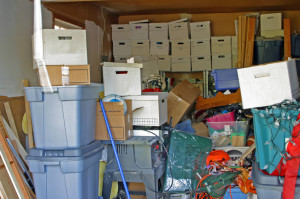
Get rid of your junk before you move.
We finally get to see the amount of stuff we actually have when moving. Throughout the years, many items are replaced and the older ones get dumped in the garage, basement or attic. We also buy new clothes, crockery, upholstery, furniture, electronic gadgets and decoration items that gets added to our pile of stuff. When everything is decorated and in its correct place at home, it all feels less. But that’s not true. When you begin packing your belongings during moving, you realize the true magnitude.
The first thing is to get rid of all the things in your garage, basement and attic that you haven’t used in months, or in some instances, even years. Here are some of the best ways to unload your old junk before moving.
Have a yard sale. When planning a yard sale, start by organizing your items into boxes and labeling them based on their price. You will then have to consider making signs and posting them around your neighborhood to get the word out about your sale. On the day of the sale, set up your items early (people will arrive before the designated time) and be flexible with pricing – this will help you get rid of more stuff quickly.
Donate your belongings. If you don’t have the time for a sale, consider donating your items to a shelter, an orphanage or a humanitarian organization such as the Goodwill or Salvation Army. These non-profit organizations usually need items like clothes, books, canned food, toys, tools, bags and more.
Give them away to family and friends. Many people prefer giving fairly new and useful items to their friends and families. Older models of cell phones, laptops and clothes that no longer fit may be useful to your friends, neighbors or relatives. You can also have a clothing swap party, which can also function as a good-bye party as your friends exchange goods with one another.
Toss it. Sometimes even the best of intentions to pass along your items will fail when you have old and smelly clothes or broken down items that can’t be salvaged. In these instances, it is best to toss your old and useless stuff. Look into recycling centers in your area for old electronics and paper goods.
After getting rid of the garage, basement and attic stuff. Make and inventory of your belongings. For an average family, about one-third of their belongings are still “excess” and its best that you get rid of them too to lighten your load.
Less stuff makes for easier packing, easier travel and most likely cheaper moving expenses. It is also a great way to start fresh without the excess of junk that may have been weighing you down for years.
Don’t forget to like us on Facebook and follow us on Twitter!
• Follow us on Twitter @Relocation_News
• Become a fan of Relocation.com on Facebook

Be sure to do your research before moving to a new neighborhood.
Moving is a big step in your life that you really want the location you choose to be the very best for you and your family. Here are some things to consider when you are searching for the right neighborhood.
Check on the schools. If you have children, you are going to want to closely check on the area schools. You can start by reading online what ratings schools receive as well as online forums my parents. If you can, visit the schools and spend some time with teachers and observe how the school appears. Do they have after school programs? Do they appear to have supplies? Talk, if you can, to some parents and get a good idea of how they feel about the school.
Visit the local parks. Again, if you have children, check out the local parks. Are they well kept? Are there any activities held there? Do they appear to be safe, both during the daytime and at night?
Observe the neighborhood. Is your neighborhood well lit at night? How safe does it appear to be? Is there a neighborhood watch program? How noisy is it at night? And how is the traffic in the area? Is there adequate parking?
Check out the hospitals in the area. Are they close? Are they well established? How long is the average emergency room wait? You can find out a lot about local medical care by checking online. You might want to also look at pharmacies in the area, and perhaps check out urgent cares as well.
What types of stores are in the neighborhood? Do they open early (if you are a morning person) and what time do they close at night (if you are a night owl)? How convenient is shopping going to be for you? Is there parking available?
Check out the public transportation. Is it convenient to your home or apartment? How expensive is it? How late/early does it run? If you needed to use it to get to work, are you sure that it will be running when you need it? How about if you want to go shopping using it, or go visit a relative? How clean is it and does it appear to be safe and well-maintained?
Research the crime rates. You can usually find this information out online as well. What are police response times? Are there any sex offenders living close by? Look online for forums or message boards about your neighborhood. Many times, residents will complain about problems in the area that you will certainly never hear from a realtor. You may be able to find out a lot about things like local ordinances, property taxes or other problems.
Moving to a new neighborhood is a huge change in your life. Make sure to do your research so that you know you know you made the right choose when deciding on a new location.

Chat with your friends before you move to ease any moving day tension.
By Dermound Becker
Special to Relocation.com
Moving to a new city can be both bitter and sweet. As excited you are about the new adventure in your life, you must also leave behind your loved ones. Telling friends and family that you have decided to move can be a traumatizing experience. Here are some tips to make your moving day easier.
Tell people sooner rather than later. If you put off telling your loved ones about your decision, you give them less time to get used to the idea. You limit the time that you can spend with them before the movers arrive. As much as you are dreading the idea, you really will be better off if you broach the subject early on. Even if they are upset, it will still give you time to explain the reasons for the move to them, answer any questions they may have, and just to enjoy the time you have together while you can.
Assure your friends and family that you will stay in touch. One big fear that comes up often when someone hears that a close friend is moving away is that this will be the end of the relationship. Make sure that these people close to you can, for instance, have a way to contact you. Luckily, these days it is even easier to stay in touch such as through blogs, email, Skype, or even writing a letter. Follow this up by contacting them as soon as you can after your move.
Decide who you want to tell. You need to decide exactly who you want to tell and just how you want to tell them. You could consider having a cook-out or picnic and inform everyone at the same time. Or you might want to have individuals over for coffee, or meet them for lunch, and tell them separately. However you decide to do it, expect tears and be prepared with tissues.
Be prepared for questions, and have answers. People who care about you want to know that you are making a good decision. Explain things carefully. If this is for a job, tell them all about what a great opportunity it is for you, for example.
Keep them informed. Let them know how things are progressing with the move. Give them your new address ahead of time. Assure them that you will call along the way, or when you have safely arrived. Any assurances you can give them will help soften the blow of losing you.
Everyone will react differently. Not everyone is going to be happy to hear your moving news. If you must, be firm with them about the fact that this is actually going to happen. You do not want to lose a close friend over this if you can help it, but then again, you have to think of yourself and your best interests first. Just give them time to come around.
As soon as you are settled in, send pictures and updates to your friends and family members. Let them see your new home, your neighborhood and where you work or go to school. Let them see how happy you are in your new area. Good friends and loving family will want you to be happy, after all.
April 4th, 2011 by
Admin
Categories:
Celebrity Real Estate,
condos,
family moving,
foreclosures,
homes for sale,
House Swap,
Moving,
Moving Day,
Moving Industry,
Real Estate,
Relocation,
rentals Comments:
No Comments » 
The Kentucky Versailles Castle - Listed for $30 million. (Image Credit: Kentucky.com)
This week we are loving the gorgeous pictures of the castle Kentucky that is currently on the market. Constructed by Rex and Caroline Martin after their trip to France the home was left unfinished after the couple divorced a few years later. Now listed for $30 million, the massive castle is currently run as an inn and bed-and-breakfast that is being looked at by several interested buyers. On the rest of the Beat we featured celebrity homes for sale in California. Molly Sims recently listed her Hollywood Hills home as did Meatloaf and Burt Reynolds. As we get into spring, we are excited to check out what new properties will be featured on the Beat. Until next time…

Shot of the Kentucky Versailles Castle - (Image Credit: Zillow.com)
• Kentucky’s Versailles Castle for Sale
After a trip to Versailles, France in 1968 Rex and Caroline Martin were inspired to create their own castle right in Kentucky. They later divorced in 1975 and the uncompleted castle was left unused until Rex’s death in 2003. According to Zillow.com, it was later sold for $1.8 to Thomas Post who rebuilt it as a bed-and-breakfast/inn that has since been open for rentals and special events like weddings and fundraisers. Located on Versailles Road between Lexington and Frankfort, the stunning 50-room castle is now on the market for $30 million, according to Kentucky.com. There are talks that at least two people from South America are interested in purchasing the castle and if they do they can look forward to a 50-acre estate with stone walls, gardens, fountains, a tennis court and a huge pool. The new buyer can also look forward to having a game room, a library, a dining room as well as opulent window and home furnishings.

Molly Sims' modern kitchen - Listed for $2.8 million. (Image Credit: Zillow.com)
• Molly Sims Listed Her Hollywood Hills Home for $2.8 Million
Model and actress Molly Sims recently placed her gorgeous Hollywood Hills home on the market for $2.8 million. The Spanish-style home, built in the 1930s, includes three bedrooms, 3.5 bathrooms, and a modern kitchen with Viking appliances. The immaculately-styled home was also featured in InStyle magazine.
![KourtKardashian_PICS[1]](http://blog.relocation.com/wp-content/uploads/2011/04/KourtKardashian_PICS1-210x300.jpg)
Pics of Kourtney Kardashian's new home - Purchased for $1.7 million. (Image Credit: The RealEstalker)
•
Kourtney Kardashian Buys a New Home
Kourtney Kardashian of “Keeping up with the Kardashian” fame recently purchased a new home for $1.7 million. Located in Calabasas, California, the four bedroom, 4.5 bathroom room also includes an office, library, guest room, fitness room and a media lounge. The 5,334-square-foot home also includes a wine cellar, a fireplace, a game room, and a modern kitchen with stainless steel appliances and a breakfast nook as well as gorgeous views of the hills.
![MeatLoaf_CAL[1]](http://blog.relocation.com/wp-content/uploads/2011/04/MeatLoaf_CAL1-111x300.jpg)
Pics of Meat Loaf's home - Listed for $3.2 million. (Image Credit: The Real Estalker)
•
Meat Loaf is Selling his California Estate
Singer and current participant of “The Celebrity Apprentice” is currently moving from his Calabasas, California estate. Listed for $3.2 million, the 7,142 square foot estate includes seven bedrooms and seven bathrooms that once featured in
Architectural Digest for its impressive décor. The new owner can also look forward to a three-car garage, a formal living room, a fireplace, a media room, and a custom-made kitchen.

Burt Reynolds home - Listed for sale at $10.9 million. (Image Credit: Zillow.com)
• Burt Reynolds’ Home for Sale at $10.9 Million
Burt Reynolds recently listed his Los Angeles home for sale for $10.9 million. His modern 20,580-square-foot glass home features stunning views of the city and the ocean. The home was recently designed by Steve Hermann who updated the home to feature numerous amenities such as a state-of-the-art kitchen and a large family room. The home also has four bedrooms and four bathrooms.
Don’t forget to like us on Facebook and follow us on Twitter!
• Follow us on Twitter @Relocation_News
• Become a fan of Relocation.com on Facebook

Now that the kids have moved on it's time to think of how you will remodel their old room.
By Faith Teel
Special to Relocation.com
It’s that moment that every parent looks forward to with excitement and dread: your child has gone off to college or moved into their own apartment. Their room is empty, the bed is always made and no rock music comes blaring through the walls. Now what?
Whether this is a sad moment because you miss your child, or a happy one because the house is more serene, or a little of both, you still have to decide what to do with their room. Even for parents that miss their kids, the best course of action may be counter-intuitive: many experts recommend remodeling the room for a new purpose so that it doesn’t constantly remind you of the past.
If you are concerned that your child won’t feel welcome when he or she returns for a visit (or for summer break), you can discuss the changes with him (or her). Here are a few things to think about before you have your talk:
• Will your child want any of the furniture in the room? If not, can the furniture be re-used, or should it be sold or thrown away?
• If he or she has left keepsakes behind, what can be thrown away? What can be stored? Consider displaying the most precious items (such as trophies or pennants) so that your son or daughter still has a place in your home.
• As you update the room to suit your tastes, can you make concessions to your child’s taste? For example, if you want to paint the walls gray but your daughter loves pink, perhaps you could add pink accents in the lamps or curtains.
As you decide how to redecorate the room, think about how your life will change in your child’s absence. What hobbies will you pursue? Will you exercise more? Once you have a grasp of how you’ll use all of your new free time, you can update the room to accommodate your new lifestyle.
Here’s what other “empty-nesters” have made in their extra space:
1. A home office:
Whether you’re thinking of starting your own business or just need a place to keep your bills, a home office can help you stay organized.
Suggested amenities: add a computer desk, computer chair, shelves and filing cabinets.
2. A sewing room:
Experienced sewers know that you’ll get more done if you can keep your sewing machine out where it’s easy to access, instead of having to pack it up each time you finish a project.
Suggested amenities: add a sewing table, cutting table, quilting frame, thread organizer, shelves for storing fabric.
3. A game room:
Do you and your friends get together to play poker or Uno? Why not set up a place for social card games?
Suggested amenities: add a card table and chairs, mini-fridge, game-themed decor and the games themseleves.
Tip: Don’t go overboard and buy every single game out there. Pick three-five of your favorites and make it a point to have friends over once a month for an organized game night.
4. An art studio:
Have you always wanted to tap into your creative side? Now that your kids are grown up (or almost grown up), you may have more time to paint or craft.
Suggested amenities: add corkboards for pinning ideas to, tables or easels, shelves to store supplies, a clean-up sink (for painters), paint, brushes, etc.
5. A media room:
Do you love to watch movies? Why not make your own home theater? The room can have furnishings as simple as a couch and a television, or you can go wild with theater seats and surround-sound!
Suggested amenities: room-darkening curtains (for watching during the day), comfortable seating, a DVD player, etc.
6. An exercise room:
Perhaps you already exercise regularly, or perhaps you’ve been putting it off. Either way, you’re more likely to keep in shape if you have a pleasant space for your daily workout.
Suggested amenities: exercise mat, exercise equipment, inspiring pictures and a music system.
7. A large closet:
If you have a big wardrobe crammed into a small closet, consider making the bedroom into a luxurious walk-in closet.
Suggested amenities: cedar wall panels (an easy DIY project), sturdy closet rods and hangers, mirrors.
8. A “man cave”:
Does the gentleman of the house need a place to watch football games or finish his latest project? If so, consider remodeling the room to suit his tastes and needs.
Suggested amenities: mini-fridge, sound system, TV, comfortable chair, shelves and tables for hobbies.
Whether you’re planning an art studio or installing a home theater, your redecorating budget doesn’t have to be large. Scour Craigslist and yard sales for perfect finds, and don’t be afraid to repaint and reuse your child’s old furniture. In many cases, you can cut down on costs by keeping the flooring as-is. Reclaiming your space can enrich your life without draining your wallet.

Congratulations on moving in - now it's time to unpack and finally settle in.
You did it – you finally moved it! Although the moving companies are long gone you now have a sea of moving boxes, unpainted walls and a bare home to deal with. Before you go crazy with the unpacking, we advise setting up a plan so that you can quickly settle-in and enjoy your new home.
1. Go out to dinner. No, this isn’t a plot to aid in your procrastination. We simply think that taking break after the days (and sometimes months) leading up to a move is a healthy way to re-focus on your plan. Getting out of the house is a great stress-reliever that will (hopefully) allow you to think about something else other than those boxes at home. Plus, having a relaxed dinner is also a great way to check out a restaurant or neighborhood in your new town or city.
2. Make it a party. If you can’t manage to break away from your unsettled home, consider having a painting and/or unpacking party. This will allow you to ask for help by offering your friends food and drinks as well as they help you in making your house a home. Make sure you tell your friends to wear old or ratty clothes –painting isn’t pretty but it can sure be a lot of fun.
3. Unpack with purpose. Moving is a great time to unpack in an organized manner – meaning not just leaving your items unattended to for days, or the worst case, leaving them in boxes and shoving them in a closet! If you find that you don’t have room for certain items, consider storage or maybe giving them away. You want to establish a fresh start in your new place and not a continuation of the way you were living.
4. Don’t overdue it. Everyone wants to be settled into their new home and neighborhood as quickly as possible. The problem when you try to do too much is complete burnout. Give yourself a schedule – allotting time for breaks outside of the home. Sometimes what you think you can do in a week will actually take two or even three weeks. Don’t let this stress you out and realize the hard part (moving) is over.
5. Celebrate. We mentioned going out to dinner and having a painting party, but now that you have unpacked and decorated it’s time to really celebrate with a housewarming party! Invite friends in your area for a casual evening of food and drinks. If you are completely new to an area, have a small dinner party with just you and your partner and/or roommate. However you celebrate, make sure you site back and finally enjoy the fruits of your labor.
March 21st, 2011 by
Admin
Categories:
design and decorate,
Do It Yourself,
exterior projects,
Home Improvement,
interior projects,
Moving,
Moving Day,
Moving Industry,
self storage,
Storage,
storage facilities,
storage units Comments:
No Comments » 
Arm yourself with an arsenal of cleaning products to tackle spring cleaning!
By Serena Norr
It’s officially spring! Even though it’s still pretty cold out there, we are getting excited about shedding our bulky winter coats, getting a much-needed dose of Vitamin D and cleaning out our homes for the season. Spring cleaning is a great way to get rid of items that you no longer need by donating, tossing them or placing them in storage – making your home more functional and organized. Here are some simple tips to make your house a lean mean clean machine this spring.
1. Start with the windows. An often neglected part of any house, the windows are also the easiest places for dirt and grim to acclimate. Using a rubber-edge squeegee or a sponge, mix a bucket with water and some window cleaner. Wipe and repeat until the windows are spic and span. You may also need to use a dry cloth afterward to ensure that you removed all of the dirt. While your doing this make sure you also wash your window blinds and/or curtains.
2. Change your linens. Do you have frayed and broken down linens? Spring is a great time to try new patterns and update your home with lighter and brighter colors (think feel good colors for summer!) We love flowing duvets with pale greens, yellows and lavenders.
3. Clean the refrigerator. Your fridge should really be cleaned all the time, but the winter has a way to make it easier to acclimate containers of old food – leading to mildew and pretty nasty smells. Even if you do throw out old boxes of Chinese food before it goes bad, you (most likely) aren’t rigorous about cleaning out your entire fridge. Start by taking everything out (yes, we mean everything) and throw out anything that is old or has a strange smell and/or resembles something of a science project (e.g. mold). Remove the drawers and shelves from the fridge and wash off any dirt, crust or old food. You can also scrub difficult-to-get areas with a scrub brush and/or an old toothbrush. Throughout the spring and summer get in a habit of regularly cleaning your fridge and freezer by making it a part of your normal cleaning schedule (about twice a month).
4. Clean those rugs. Rugs and carpets can very easily acclimate dirt and dust (even if you regularly vacuum). In the spring, deep clean your rugs or carpets by using a strong cleaner or hiring a professional cleaning company. Since these solvents are pretty strong, be sure to keep the windows open and try to avoid staying where the carpets are for a few hours. If you don’t have rugs, make sure to sweep, scrub and mop your floors.
5. Go through your closet. Ah, the closet, the quintessential dumping ground for all seasons. Use the spring as a way to de-clutter your closet and make some sense of the mess. Start by removing any winter items – like bulky coats and sweaters – and place them into boxes for storage or storage bins to be placed under your bed or in your garage. If there are items that you don’t need (or really never use), consider this a time to get rid of them once and for all by donating them to a local charity or give them to friends and family members. Since it is getting warmer, you may also want to sell them at a garage sale. It’s up to you how you get rid of them but the main thing is that you actually get rid of them. This also applies to shoes, bags, belts and the random knick knacks that often have a way of getting tossed into closets.
6. Junk draws no more. Junk draws are called junk drawers quite simply because they are a nesting ground for all the random things in our homes. Instead of making it all about junk, make these drawers practical and useful. Start by taking everything out of your drawer in order to clean it. Look through the contents and decide – what you really need and what is just garbage. Is your drawer filled with random nails or old tape? If you don’t need it, you may want to toss it. Oftentimes these useless items just live in our drawers until moving day. You may also consider purchasing a storage unit for your drawers in order to keep your items organized and neat.
7. Don’t forget these drawers. Cleaning not only applies to your junk drawer but should apply to your medicine cabinets, silverware drawers, cupboards and clothing drawers. Get rid of any expired medications, clean your silverware and go through your cupboards for old food. You should also go through your clothing drawers – they same way you did through your closets – and get rid of anything you no longer need or use.
8. Update your look. Just like update your style, you should also do the same for the look of your house. Your home is a place to seek refuge and find comfort and you can’t find such peace in a home with dreary colors or one that has dirty walls. Start by washing and scrubbing the walls. Then decide on a new paint scheme. Before you paint the entire home, be sure you know your vision and what “look” you want for your new home. You can purchase samples of a color or bring home color swatches before you make your final decision. Also, look through magazines and cut out pictures that resemble the look you want. After you paint, consider hanging up artwork and/or family pictures to give your home a personal touch.
Spring cleaning isn’t easy and sometimes can’t be fun, but it is a great way to shed some excessive junk from your home as you lighten up for the summer. You will not only feel better about losing these unnecessary layers of junk, your home will look brighter and become more functional – making it truly a place to find comfort.
Other areas to clean:
- Attic, garage or any other home storage units
- Home office
- Light fixtures
- Outdoor area
- Kid’s rooms
Don’t forget to like us on Facebook and follow us on Twitter!
• Follow us on Twitter @Relocation_News
• Become a fan of Relocation.com on Facebook
March 16th, 2011 by
Admin
Categories:
Celebrity Real Estate,
condos,
family moving,
foreclosures,
Home Improvement,
homes for sale,
House Swap,
International Moving,
Mortgages,
Moving,
Moving Day,
Moving Industry,
Plan Your Move,
Real Estate,
Relocation,
rentals Comments:
No Comments » By Serena Norr
This week ended up being an all-homes-for sale edition of the Beat, and boy, were there some interesting ones on the market. Starting in NYC, we featured the $90 million dollar estate that was once owned by the Woolworth family. The mansion, now owned by Lucille Roberts’ family, includes 10 bedrooms and 11.5 bathrooms. For a smaller amount (and not much), you can purchase Dennis Quaid’s home in the Pacific Palisades, Mary J. Blige’s home in New Jersey or Christine Aguilera’s home in Beverly Hills. Kelsey Grammer is also selling his Avon, Colorado home this week for $7.9 million. Still too rich for our blood, we’ll simply admire this luxurious real estate eye candy. Until next week…

View of the $90 million dollar Woolworth mansion. (Image Credit: Curbed NY)
• Woolworth Mansion for Sale at $90 Million
The former Gothic-style townhouse once owned by Frank Woolworth (of the nickel and dime store) has recently been place on the market for the staggering asking price of $90 million dollars! Located on East 80th Street in NYC, the 18,000-square-foot mansion, now owned by Lucille Roberts (the fitness mogul), includes lavish amenities such as three kitchens, 10 bedrooms, an elevator, a library and 11.5 bathrooms. The massive complex, designed by famed architect Charles Pierpont Henry Gilbert, also includes 14-foot ceilings, seven floors, eight fireplaces, a gym and a suite for staff members. Roberts purchased the home in 1995 for $6 million but passed away in 2003 – which is why her family is looking to sell the opulent mansion. For those that can’t fork over the $90 million dollars, the home is also available as a rental for $210,000/month.

Exterior Shot of Dennis Quaid's Home - Listed for Sale at $16.9 Million. (Image Credit: Zillow.com)
• Dennis Quaid Lists Pacific Palisades Home for $16.9 Million
Famed actor and musician Dennis Quaid is reportedly selling his Pacific Palisades home for $16.9 million in order to relocate to Texas. The French-style home, purchased in 1999, has been completely renovated by Quaid and includes a guest house, three bedrooms, three bathrooms and a huge barn for several horses. The two-acre home also includes 8,400-square-feet of living space, a modern kitchen, an office, a pool and a wine cellar that is situated amidst a backdrop of sprawling trees and luscious greenery. If sold at $16.9 million, the home would average a profit of about 823.5 percent, according to Zillow.com.

Pictures of Mary J. Blige's New Jersey Mansion - Listed for Sale at $13.9 Million. (Image Credit: Housing Watch)
• Mary J. Blige Lists New Jersey Mansion for $13.9 Million
Hip-hop mogul Mary J. Blige is reportedly looking to sell her New Jersey mansion for $13.9 million dollars. Located in Saddle River, New Jersey, the 25-room mansion features a gourmet kitchen, a movie theatre with 14 seats, a wine cellar, an indoor basketball court, a six-car garage and 18,250-square-feet of living space. The 4.2 acre house was originally listed at $17 million in 2008 and recently dropped to the current asking price.

Christina Aguilera's Beverly Hills Mansion - Listed for Sale at $13.5 Million. (Image Credit: The Real Estalker)
• Christina Aguilera Places Beverly Hills Home on the Market for $13.5 Million
Pop singing sensation Christina Aguilera recently listed her Beverly Hills estate for $13.5 million. The 10,000-square-f00t home (once owned by the Osborne’s) includes six bedrooms, nine bathrooms, a formal living room, a home theater, a library, a recording studio and an in-home hair salon. The home also includes a massive backyard equipped with a pool, lounge and built-in barbeque area.

Kelsey Grammer's Colorado Ski Home - Listed for Sale at $7.9 million. (Image Credit: The Real Estalker)
• Kelsey Grammer Lists Colorado Ski Home for $7.9 Million
Kelsey Grammer of the hit shows “Cheers” and “Fraiser” recently listed his Avon, Colorado ski estate for $7.9 million. The recently divorced and remarried TV star is looking to sell this 8,230-square-f00t home as part of his settlement with Camille Grammer (of “The Real Housewives” fame). The gorgeous three-story vacation home includes six bedrooms, 7.5 bathrooms, stone fireplaces, a gourmet kitchen and a wine tasting room that is situated on 1.67 acres.
Don’t forget to like us on Facebook and follow us on Twitter!
• Follow us on Twitter @Relocation_News
• Become a fan of Relocation.com on Facebook

Om - Practicing the art of yoga will help you stay sane leading up to moving day.
By Serena Norr
The activities leading up to moving day are going to be strenuous, and unfortunately stressful. From locating moving companies to finding to boxes to packing, these rigorous and draining moving day tasks have a way of living your body and mind all out of whack. Eating well, getting enough rest and exercise are sure bets to help you focus your energy on something other than moving for an hour or two – not to mention help you maintain your sanity. Here are some of our top workout picks for before and after the moving process.
Yoga. The ultimate in zen, yoga is the art of finding peace within the mind, body and spirit. This involves flexing the body and maintaining balance through a variety of poses and postures that can benefit both the mind and the body. When moving, try to set aside a few hours a week to practice a rigorous or gentle practice of yoga such as a vinyasa-style by creating heat or more basic and controlled poses by practicing Hatha. If you don’t have a lot of time to devote to yoga, try to focus on controlled and strong breathing exercises. This will be particularly helpful on moving day.
Pilates. Pilates is another exercise model that focuses on a connection between the mind and the body. The basic idea is to develop controlled movement from the body’s core such as by using resistance training through machines, exercise balls and bands. Strengthening your core will not only help you feel better but it will keep your mind and body energized and refreshed when dealing with the rigors of moving.
Walk. Sometimes something as simple as a walk is enough. Not only a great way to clear your mind it is an excellent form of exercise that is relevantly easy and free! Leading up to your moving day, establish a walking schedule – either an hour in the morning or after you have dealt with a stressful moving issue. Remember to load up your iPad with your favorite tunes for a much-needed break from your home and the sea of boxes.
Run. For those that want something more intense, try running. Running is ideal sport to not only improve your physical well-being but it can improve your emotional state and promote weight loss. It is also believed that after a run, you can experience a “runner’s high” where endorphins get released causing the body and mind to become intensely elated and positive. This is definitely something everyone needs during the planning stages of a move.
Zumba. Some people like to exert steam by working up a sweat. Zumba, a Latin-inspired dance, is a great way to exercise and take your mind off of the moving process through fun and intense movements. The high-energy classes will be a welcome break from packing resulting in an exhilarating workout that incorporates reggaeton, salsa, meringue and hip-hop. If you can’t make a class, try a DVD at home – ranging from Zumba Toning, Zumba Gold (for babyboomers) and Zumba in the Circuit – all of which can be adapted to all fitness levels.
Don’t forget to like us on Facebook and follow us on Twitter!
• Follow us on Twitter @Relocation_News
• Become a fan of Relocation.com on Facebook
What are some of your tips to de-stress before a move?

Moving Announcement Cards by Tiny Prints. (Image Credit: Tiny Prints)
By Serena Norr
Congratulations on your exciting move. This will be a (very) busy time for you as you research and locate movers, pack, and of course, leave your old home. Another thing on your growing to-do list should include letting your friends and family know that you are moving by announcing your move and providing them with your new contact information (address, phone number, email address, etc). One way to do so is by sending out a moving announcement either as a postcard or through an e-card – here are some of our favorite options.
1. Tiny Prints. The adorable moving announcements by Tiny Prints feature a wide-range of styles and patterns from contemporary and modern to more traditional cards to announce your move. We love the Simply Understated: Basil Cards and the Beep Beep Bug: Agua Cards that allow you to add a picture. The price for these moving announcements is also right averaging around $1.00/per card.
2. Purple Trail. With everything involved with the moving process, ordering and sending out cards might not fit into everyone’s schedule. As a website, we love quick and simple and found that on PurpleTrail.com. This online invitation site (they also offer cards you can order and mail out), features over 50 moving announcements that you fill out in their browser. You can add a personal message, upload photos and add creative design elements from Purple Trail’s library. Even better? Purple Trail is a free service when you send 75 cards or less.
3. Make your Own. For those craft mavens out there, consider making your own moving cards. This definitely requires some planning (and time) but if you are able to manage both then making your own cards can be a fun way to announce your move as you add your own personal design and flare. This can also be a fun project for kids and a great way to keep them busy while you are dealing with the organizing of your move. In your own cards, be sure to include your forwarding address, new phone number and email address.
Don’t forget to like us on Facebook and follow us on Twitter!
• Follow us on Twitter @Relocation_News
• Become a fan of Relocation.com on Facebook
March 7th, 2011 by
Admin
Categories:
Celebrity Real Estate,
condos,
family moving,
foreclosures,
homes for sale,
House Swap,
International Moving,
Mortgages,
Moving,
Moving Day,
Moving Industry,
Moving with Kids,
Moving with Pets,
Packing,
Plan Your Move,
Plan Your Relocation,
Real Estate,
Relocation,
rentals Comments:
No Comments » The wacky and wild world of celebrity real estate did not disappoint this week. First, we have Charlie Sheen and his never-ending media circus has once again made the news – except this time it is within the real estate segment. He recently purchased a 9,020-square-foot mansion in Sherman Oaks, California that is reportedly for his ex-wife and their two children. On the rest of the Beat you will find homes listed on the market – ranging from Jennifer Aniston’s $42 million mansion to Julianne Moore’s $12.5 million dollar NYC townhouse. Those amounts are a bit out of our price range but we look forward to reporting on who the lucky buyers are. Stay tuned…

Charlie Sheen's New Mansion. (Image Credit: The Real Estalker)
• Charlie Sheen Buying a New Mansion
Much has been said about the drama involved around Charlie Sheen and his media circus and now he is making news within the real estate market with his recent purchase of a mansion in Sherman Oaks, California. Purchased for his ex-wife Denise Richards, the $7,495,000, 9,020-square-foot estate includes an elevator, six bedrooms, nine bathrooms, a library, a formal living room and a gourmet kitchen. The two-story gated home also includes a formal backyard with a swimming pool and spa.

Jennifer Aniston Lists Beverly Hills Home. (Image Credit: The Real Estalker)
• Jennifer Aniston Lists Beverly Hills Mansion for $42 Million
Jennifer Aniston has recently been featured on the Beat as she has been scouring NYC for a new condo. No word yet on whether a home has been picked but there is news this week that she placed her Beverly Hills estate on the market. Listed at a whopping $42 million, the 10,000-square-foot Asian and Balinese-inspired home includes five bedrooms, 7.5 bathrooms, two living rooms, a gourmet kitchen and a home gym. The home is also said to include state-of-the-art smart house technology, an extensive security system, tons of storage space, a three-car garage and an outdoor swimming pool. Originally purchased in 2006 for $13,500,000, we’ll be sure to let you know who buys this luxurious (and expensive) property.
• Julianne Moore’s West Village Home is on the Market
Actress and children’s book author Julianne Moore originally listed her five-floor West Village townhouse for $11.995 million in 2009 – unable to find a buyer the home has been re-listed for $12.5 million. Built in the 1800s, the six-bedroom, 3 bathroom home, includes a gorgeous 49-foot garden, eat-in kitchen, a high-tech security system, a home office, media room and a laundry room.
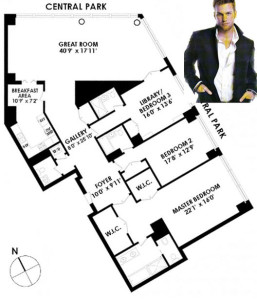
Tom Brady's floorplan. (Image Credit: Curbed NY)
• Tom Brady Selling Time Warner Center Condo
NFL star Tom Brady recently listed his three-bedroom condo for $14 million. Purchased in 2006, the condo, located in Time Warner Center, was then re-listed shortly after in 2007 where it has since been rented for $50,000/month. It has been reported by the Journal that the condo has a seller who is expected to enjoy a home with incredible light, oak flooring, a modern Chef’s kitchen with state-of-the art appliances, granite counter-tops and customized cabinetry.

Cher's former home. (Image Credit: The Real Deal)
• Cher’s Former Home Reduced to $10.2 Million
The Gorce Island mansion home formally owned by Cher in the 1990s has recently listed has recently been to $10.2 million. Located off of Miami Beach, the luxurious 11,460-square-foot mansion, owned by investor Armin Mattli, includes upgrades of about $1 million dollars, a 60-foot pool, and 158-feet or water front. The three-story home also has six bedrooms, seven bathrooms and a two-story hall embraced with double staircases. Originally listed for $16.9 million in 2008 and then for $11.5 in July – making this recent drop at least 40 percent below the market price.
Don’t forget to like us on Facebook and follow us on Twitter!
• Follow us on Twitter @Relocation_News
• Become a fan of Relocation.com on Facebook
March 3rd, 2011 by
Admin
Categories:
family moving,
Moving,
Moving Day,
Moving Industry,
Moving with Kids,
Moving with Pets,
Packing,
Plan Your Move,
Plan Your Relocation,
Real Estate,
Relocation,
Relocation Data Comments:
No Comments » 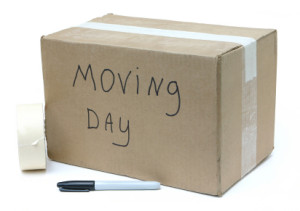
Tips to Ease Moving Day Strain When Pregnant
By Serena Norr
Sometimes you have to move, regardless of whether you want to or not. One of those special situations occurs during pregnancy. With all of the ups and downs that occur during this time, adding moving to the mix can increase a mother-to-be’s level of stress and anxiety. No need to fret, Relocation.com is here to help you make this transition as smooth as possible; whether you are moving down the block or to another state or across the country.
1. Move in the Middle:
If you have any sort of flexibility, move during your second trimester. The nausea and tiredness from the first trimester will likely have passed, leaving you feeling energized and pretty good (in general). This will be beneficial when you move, especially since your day may involve long travels, organizing boxes and dealing with movers.
2. Prepare for the Move:
In general, a successful move is determined by how organized and prepared you are. This involves planning your move by locating movers (and picking individuals that you trust), as well as obtaining boxes, packing and locating a storage facility. When looking for moving companies, ask friends and family members for referrals. You can also locate reputable and local movers online through Relocation.com. When calling moving companies, never accept an offer over the phone and be sure to research and then invite at least two-three movers to your home for an in-house moving estimate. This is the best way for movers to actually see your belongings (thus determine the price) as well as a great opportunity to interview them and ask them specific questions pertaining to your needs.
Tip: Since you are with child, make sure that you pace yourself when completing these tasks. It is best to give yourself extra time to stay on top of everything that needs to be done (writing things down helps), which will also prevent you from getting too stressed out along the way.
3. Ask for Help:
You are going to need help with your move. Even if you have a small move, be sure to ask friends and family members for their assistance with anything from packing to calling movers to locating storage. If you can, assign your helpers specific tasks in order to stay organized – having efficient and step-by-step moving checklists are great for this. You can also have your moving company do all of the packing (for an additional fee).
4. Organize your Items:
Hopefully you have some very handy helpers to assist you with your packing, but if not you can stay organized by devising a packing systems for your belongings. Through this efficient plan, organize your items into three piles: pack, donate and toss. The items that don’t work or maybe have holes in them are likely items to toss. The donate pile may be items of clothing that you no longer like or those that don’t fit to be given to friends or charity; while the keep pile are items that will move with you to your new home and can be placed in boxes. This moving system is also a great way to start fresh and get rid of old junk before the new baby. Stay organized throughout the packing process by labeling all of your boxes based on what room the items will be placed. This is also a great way for the movers to know where your belongings should go.
5. Test your Home:
If you are moving into an older home be sure to have it tested for lead. Although you likely had a home inspection, make sure that this also included looking for metals, lead and asbestos. This problem is common in older homes and even in homes that have undergone renovations where walls were simply covered and not stripped of these hazardous materials.
6. Rest and Rest Some More:
It’s finally here; your moving day! This goes without saying but be sure that you get plenty of rest before your move. During the move, be sure to take breaks to rest and stretch, use the restroom, drink tons of fluids and don’t strain your body. This includes not getting stressed out when the inevitable problem happens on moving day. Also, be sure that you are comfortable by wearing comfy shoes and loose fitting clothing and don’t lift anything heavy. Luckily, you don’t have to prove you are supermom on moving day, especially since you are prepared, organized and have a few helping hands to assist you along the way.
Don’t forget to like us on Facebook and follow us on Twitter!
• Follow us on Twitter @Relocation_News
• Become a fan of Relocation.com on Facebook
February 22nd, 2011 by
Admin
Categories:
condos,
DIY Move,
family moving,
foreclosures,
homes for sale,
House Swap,
Moving,
Moving Day,
Plan Your Move,
Plan Your Relocation,
Real Estate,
Relocation,
rentals,
Travel Comments:
No Comments »
Looking to buy a home in Hawaii? Whether you’re relocating to the islands or thinking of buying an investment property, finding the right piece of Hawaii real estate requires time, effort, and yes, an island visit — or two! Though you can easily narrow down prospective island properties with a myriad of online tools, virtual house hunting can only take you so far. There’s no substitute for the real thing.
Visiting Hawaii isn’t exactly a hard sell, but if you’re new to the islands; it can still be daunting. Here are some quick tips to keep in mind before you book your trip.
1. You don’t have to splurge on a hotel.
There are two versions of Hawaii: the one you see as a tourist, and the one you see as a resident. Though there is a massive amount of resources and services available to tourists, things work very differently for locals. While you’ll probably have to stay in a hotel, keep it simple. Forget the ocean view or the upgrade to a suite, and don’t rule out discount chains. After all, the point of visiting Hawaii is to spend as little time as possible in your hotel room. And you don’t want to mistake tourist luxury for day-to-day reality. You might even want to consider a Hawaii vacation rental… though be careful: these are tightly regulated, and not all of them are legal operations.
2. Be flexible on transportation.
For the most freedom and flexibility, you’ll probably want to rent a car while in Hawaii. But if your budget is limited, or if you’re not comfortable driving in an unfamiliar place, you have other options. If your interest is Honolulu real estate, the island of Oahu boasts one of the best bus systems in the country. If you find a place to stay near Waikiki or Ala Moana Center, you can catch the bus just about anywhere for $2.50 each way (or $25 for a four-day pass). Otherwise, you can look for shuttle and taxi services (though these often require reservations, as you can’t “hail a cab” on the street). Finally, remember that there are many friendly and knowledgeable Realtors in Hawaii. They would know the best way to get around your future neighborhood, and often schedule caravans or gladly take clients around on their own dime.
3. Play early, work late.
Checking out Hawaii homes and Hawaii condos is hard work, but it’s hard to resist taking some time to play tourist. You should! But if you’re looking to see some of the most popular attractions — the Arizona Memorial at Pearl Harbor, Hanauma Bay, or Diamond Head on Oahu, or the Hawaii Volcanoes National Park on the Big Island — don’t waste your time in lines or fighting crowds. Start your day as early as possible to avoid the crunch, and to save more of your day for your property search. Hike Diamond Head at dawn, catch the first tour at Pearl Harbor, and be ready to get back to work by lunch. The afternoon and early evening is often the best time to meet with Realtors or sellers, anyway.
4. Eat different.
Hungry? Sure, Hawaii is a U.S. state, and has most of the brands and chains Americans love. But Hawaii is in many ways a whole other country, and overflows with unique dining options. Try to make it through your stay without visiting a single chain restaurant. Or at least stick to Hawaii-based chains: Zippy’s and L&L Hawaiian Barbecue restaurants are almost everywhere. Mom and pop diners and food trucks are great options as well. Remember that Hawaii has strong ties to the Pacific Rim and Asia, and explore those cuisines. You probably won’t be able to stick to your diet while in the islands, but you could quickly become an expert in sushi, or the local plate lunch.
5. Slow down, and take it easy.
If you’re used to the fast-paced, brisk and efficient pace of business in most American cities, landing in Hawaii can be a jarring experience. Bringing expectations from New York, Chicago or L.A. will only lead to frustration. Things in Hawaii move slowly, run late, and are usually very casual. (“Hawaiian Time” is an oft-used phrase that essentially means nothing starts or runs on time.) Leave your ties at home, don’t panic if you get a hug instead of a handshake, and expect to miss a few appointments. Rather than trying to squeeze in six visits or meetings, plan for three, then play it by ear.
Finally, don’t forget the basics. Wear sunscreen and carry water, as you can still get sunburned or dehydrated during “winter” in Hawaii. Don’t leave valuables in your rental car, and keep important documents safe. And most importantly, enjoy. You’re in Hawaii!

You'll have a newfound freedom when moving abroad - just don't forget to process your driver's application beforehand.
By Relocation.com Staff
When moving abroad it is advisable to obtain an international driving permit – (even if you don’t plan on doing much driving). This form of identification is valid in over 150 countries and is translated into 10 languages. It can be very helpful as a universal identification, and of course, necessary if you are actually driving.
For those that plan to operate a vehicle, you should investigate the driving laws in your new country as soon as you arrive. Every country has different rules regarding how long after you arrive that you will need to get a new license and what information you will need to provide to receive your new license.
In some countries a driver’s license from the United States will be honored and in others you must obtain a local license. You may also need an international driving license or international permit. This is just a certification of license and is currently available in nine languages. When you arrive in your new country you will usually be given a grace period before you need to obtain your local license. You should be prepared to take a whole new test, including a written exam and eye exam and potentially a practical driving test.
If you are moving to a country in which driving is done on the opposite of the road (e.g. England, Japan or Australia), you will want to get some good practice in before you are required to take a practical driving examination. Even for experienced drivers, these new driving rules will pose some serious short-term challenges.
To obtain a international driving license or international permit, you will need a valid U.S. driver’s license, $15USD , and two passport-type photos to your local AAA office. You will also have to fill out an application to obtain an International Driving Permit and they may take 4-6 before you receive your license or permit. If you are currently overseas you can mail your completed application to the following office and address:
AAA/IDP
1000 AAA Dr.
Heathrow, FL
32746
Attn: Mailstop #2
February 2nd, 2011 by
Admin
Categories:
Celebrity Real Estate,
condos,
design and decorate,
Do It Yourself,
family moving,
foreclosures,
Home Improvement,
homes for sale,
House Swap,
Moving,
Moving Day,
Plan Your Relocation,
Real Estate,
Relocation,
Relocation Data,
rentals Comments:
No Comments » 
Gorgeous views from Katay Sagal's former home - sold for $3.77 million. (Image Credit: Housing Watch)
By Serena Norr
We saw some exciting properties listed on the celebrity real estate market this week. Starting with novelist Truman Capote whose Brooklyn Heights home was recently listed on the market for $15.9 million – a drop from its original listing of $18 million. Considered one of the most expensive homes for sale in Brooklyn, the gorgeous Greek Revival is said to be the home where Capote lived from 1955-1965 and where he also wrote “In Cold Blood” and “Breakfast at Tiffany’s.” Kate Moss, the professional waif was also on the Beat this week for purchasing an historic mansion in London. Once owned by several literary figures, the home is situated on Highgate Hill and includes seven bedrooms and seven fireplaces – among many other attributes of this four-floor mansion. There were also numerous homes placed on the market from Los Angeles such as Rose McGowan’s Spanish-style home and Kyle Richards’ (of the Real Housewife fame) Los Angeles cul-de-sac and we are eager to see who purchases these hot properties. Until next time…

Exterior shot of Truman Capote's Brooklyn townhouse - Listed for $15.9 million. (Image Credit: Sotheby's International Realty)

Four flights of stairs in Truman's former townhouse

Kitchen in Truman Capote's former home. (Image Credit: Sotheby's International Realty)
• Truman Capote’s Brooklyn Home Drops to $15.9 Million
Truman Capote’s former Brooklyn Heights residence was recently placed on the market for $18 million – only to see a recent drop to $15.9 million. A Greek Revival townhouse, built in 1839, the 9,000- square-foot home includes 11 bedrooms, 11 fireplaces, columned porches, mahogany staircases, two kitchens, crystal chandeliers, an artist’s studio, a library and a gorgeous garden. The sale of the historic home is being maintained by Sotheby’s Realty that is said to be the most expensive townhouse for sale in Brooklyn. Capote lived in the home from 1955-1965 where he wrote “Breakfast at Tiffany’s” and “In Cold Blood.”

Exterior shot of Rosie McGowan's home - Listed for sale at $1.8 million. (Image Credit: The Luxist)

Rose McGowan's living room- Listed for sale at $1.8 million. (Image Credit: Housing Watch)
• Rose McGowan Lists Los Feliz-Area Home
Actress Rose McGowan recently listed her Los Feliz-area home for $1,849,000 million. Purchased in 2004, the home features both Spanish and Moroccan architectural elements that cover the four-bedroom with wood doors, three-bathroom home. The vintage-inspired home also includes a formal dining area, arched windows and 4,278-square-feet of living space. The home also includes a renovated kitchen and dining room and French doors that opens to a balcony on the second floor.

Katey Sagal's Kitchen - Sold for $3.77 million. (Image Credit: Housing Watch)

View from the pool of Katay Sagal's former home.
• Katey Sagal Sells Her Hollywood Hills Home for $3.77 Million
Actress Katey Sagal and her husband Kurt Sutter have recently sold their spacious Los Angeles home for $3.77 million to Rickey Minor, former music director of “American Idol.” Measuring at over 7,202-square-feet, this five-bedroom, eight-bathroom home is located on a gated property that leads up to the wooded hillside property. Built in 1962, the home is situated on 1.5 acres of land that also includes a dining room, a two-sided fireplace, a built-in contemporary breakfast area and an outdoor area with a basketball court, swimming pool and spa that also happen to overlook the gorgeous LA hills and the ocean.

The new mansion Kate Moss purchased for £7,950,000. (Image Credit: The Real Estalker)
• Kate Moss Buys a Historic Literary Mansion in London
Model Kate Moss recently purchased a 6,728-square-foot home in London for £7,950,000. Situated on Highgate Hill, one of the highest points in London, the mansion is considered an historic home where numerous literary figures once lived. The historic four-floor home includes seven bedrooms, seven fireplaces, two kitchens and four full-sized bathrooms. There is also a wine cellar, boiler room, storage space and guest quarters that includes two bedrooms, two bathrooms, a laundry room and a kitchen/dining area. Moss also owns a 10-bedroom farmhouse in Little Faringdon and a property in St. John’s Wood/Primrose Hill area of London, which is expected to go on the market shortly.

Kyle Richards' Hollywood estate - Listed for sale at $2.4 million. (Image Credit: The Real Estalker)
• Kyle Richards, a Real Housewife of Beverly Hills is Looking to Sell
Kyle Richards of the “Real Housewives of Beverly Hills” recently placed her four-bedroom, five-bathroom home on the market for $2,450,000. Located in Los Angeles, the 4,200-square-foot remodeled home also includes a formal dining area, an office and a resort-style back yard with a pool, barbecue area and a spa. The home, located at the end of a quiet cul-de-sac, was first listed for sale in 2009 for $3,450,000, which later dropped to its current listing price.
January 31st, 2011 by
Admin
Categories:
family moving,
Moving,
Moving Day,
Moving with Kids,
Packing,
Plan Your Move,
Plan Your Relocation,
Real Estate,
Relocation,
Schools,
Travel Comments:
No Comments » 
Research schools in Hawaii before you make the big move. (Image Credit: across.co.nz)
Guest Post by Aloha Living.com
In searching for the perfect Hawaii home, nearby schools are often as important a factor as the number of bedrooms or the view. Hawaii is unique in several ways, from its single statewide public school system to the prominence and size of private schools. Whether you have a family or are thinking of starting one, it pays to research your education options when buying Hawaii real estate.
Honolulu is home to the largest independent school: Punahou School. And Punahou’s alumni rolls are packed with notable leaders in business and politics. U.S. President Barack Obama is the school’s most famous graduate, but AOL founder Steve Case also went to Punahou, as did eBay founder Pierre Omidyar, and even Sun Yat-Sen, founder of the Republic of China.
Nestled in a valley amongst a mix of condos and historic single-family homes, Punahou houses over 3,500 students from grades K-12. Admission is fiercely competitive, with only one out of four applicants able to enroll. And the school’s prestige comes at a price: annual tuition is over $16,000.
Punahou’s closest rival is Iolani School, situated just across the way from Waikiki, perhaps the most famous stretch of Honolulu real estate. Also a private school, Iolani is known for its rigorous academics and emphasis on long-term, high-achieving career plans. If you can afford a Waikiki condo, you can probably afford to send your kids across the bridge to Iolani.
There are dozens of other good private schools in Honolulu, including the Mid-Pacific Institute in Manoa (not surprisingly, also home to some of the most expensive Hawaii real estate), and Kamehameha Schools, which focuses its efforts on benefiting students and families of native Hawaiian ancestry. Enrollment there is, obviously, pretty limited.
When it comes to public schools, choosing from among many varied Honolulu neighborhoods becomes even more important. Hawaii’s single, statewide Department of Education brings with it a few advantages, but many challenges, and compared to school systems in the rest of the U.S., it’s fair to say that Hawaii schools lag behind.
Fortunately, some Hawaii public schools have managed to distinguish themselves.
Locally, Honolulu Magazine publishes an annual ‘Grading the Public Schools’ issue that ranks all public schools in the state. And nationally, there are a number of education portals — such as GreatSchools.net — that apply their own scores and rankings to schools.
Three schools stand out in both the Honolulu Magazine and GreatSchools.net rankings.
Moanalua High School was the top-ranked public high school according to the latest report from Honolulu Magazine, and received a 10/10 rating from GreatSchools.net. Moanalua High School is located in Salt Lake, less than seven miles west of downtown. The area is among the most densely populated areas on Oahu, packed with a wide array of condo complexes.
Mililani High School also fared well in the school rankings, and it’s also one of the largest high schools in the state, with an enrollment of about 2,500. It’s located in Mililani in central O’ahu, the state’s largest planned community. Mililani is a large suburb widely known for being great for families, with thousands of single-family homes and townhomes. The commute into town is long, but the trip is often worth it to those seeking a safe community with great schools, parks, recreation centers and shopping.
Finally, there’s Kalani High School in East Honolulu, the last of the three public high schools to earn a 10/10 GreatSchools.net rating. In terms of enrollment, it’s half the size of Mililani. But because of its location near Kahala, its students generally come from more prosperous homes. East Honolulu real estate is among the state’s most coveted, and a Kahala home is often a sure sign of success.
When you’re ready to buy a Hawaii home, perhaps to start a new career or to retire, it pays to research what the area has to offer the next generation. AlohaLiving.com — a Hawaii real estate search portal powered by trusted MLS data — can help you start your search. The site includes a wide variety of neighborhood information, including school data from GreatSchools.net. Look up profiles on public and private schools, including test scores, reviews and more.
Don’t forget to like us on Facebook and follow us on Twitter!
• Follow us on Twitter @Relocation_News
• Become a fan of Relocation.com on Facebook

Relaxing in a dog-friendly city
By Relocation.com Staff
When making a decision on where to relocate, does your pooch’s social life come into play? Moving with a pet can be hard, but it’s easier when you’re moving to a pet-friendly city! Here are some of our favorites.
NEW YORK
Once you put away the moving boxes, both you and your best friend can take a bite out of the Big Apple, especially when shopping. Dogs are welcome in swanky Manhattan shops, including Saks, Bloomingdale’s and Tiffany & Co.
There are many outdoor restaurants that welcome canines. For a special treat, you can take a walk through Riverside Park (pup must remain leashed), and head to the Boat Basin Café. There, you will find a pet-friendly, open-air patio, where tails will be wagging as the sun sets over the Hudson River. Brooklyn, Queens, The Bronx and Staten Island are also huge pet towns.
BOSTON
Dog beaches abound in Boston, where the both of you can get some exercise. If you’re hungry, most of the outdoor cafés will welcome your pack. Try Madison Park Café, which features an attractive garden setting and welcomes pets with a fresh bowl of water.
TORONTO
International relocations can be especially grueling, but in this case, completely worth it! Toronto is a doggie’s dream. In addition to the numerous dog parks and off-leash areas, you’ll find that almost every family in the city has a pup, so Fido is sure to find many friends.
For some serious treats, hightail it over to Three Dog Bakery and get a whiff of the yummy peanut butter scent that fills the shop. Pick up a pack of Peanut Woofers or some Jump ’n Sit Bits.
KANSAS CITY
When you get hungry in Kansas City, head to nearby Country Club Plaza and grab a bite at re:verse, which has a great dog-friendly outdoor seating area. Then, for some off-leash action, head to Wayside Waifs Bark Park, which features five acres of fenced-in grass, plenty of room for Fido to burn off the extra energy.
MILWAUKEE
This town is known for more than just beer. It is a super-friendly town that is super friendly to canine companions as well. You can give the pup a run at Granville Dog Park, Milwaukee’s only county park where dogs may run and socialize off-leash.
For even more Fido fun, take a trip to Petlicious Dog Biscuit Bakery and Pet Spa, located 30 minutes from the heart of the city in Pewaukee. Treat Toto to a spa grooming, a new sweater and a tin of homemade biscuits.
DALLAS
Everything might be bigger in Texas, but that doesn’t mean people are going to laugh at your favorite little buddy. Since the weather is always welcoming, pet-friendly outdoor cafés are a terrific way to spend some quality time with the pooch. In addition, large off-leash parks dot the city.
On special occasions, pooches can travel in style during a carriage ride with Party Animals Carriage Rides and tour the Historic West End and Uptown Dallas.
Related Articles:
How to Choose a Pet Carrier
Pet Travel Warnings
Video – Don’t Make These Mistakes Moving With Pets
Don’t forget to like us on Facebook and follow us on Twitter!
• Follow us on Twitter @Relocation_News
• Become a fan of Relocation.com on Facebook
January 5th, 2011 by
Admin
Categories:
DIY Move,
family moving,
Holidays,
Moving,
Moving Day,
Moving Industry,
Moving with Kids,
Packing,
Plan Your Move,
Plan Your Relocation,
Relocation,
Relocation Data Comments:
No Comments » 
Moving with young children can actually be enjoyable!
By Relocation.com Staff
Although it is advisable to move during the summer period to start children in school during the beginning of a new school year, this is not always possible. Given the other alternatives, experts are divided on the best time to move when you have children that are in school. Some experts think that it is best to move during the holidays, while others believe it is best to move during the school year.
If you have the flexibility to choose when you move your family, then you should consider a couple of points when making your decision.
Moving During the Holidays:
- The children are out of school anyway. Their studies will not be interrupted.
- Your children will start the new term with other new kids and therefore may not be considered the new kids on the block.
- Other activities such as sports or extra-curricular activities may begin after major holidays.
Moving During the School Year:
- Your children will make friends more quickly because they immediately jump into the classroom environment.
- A quickly established routine may help your children adapt easier.
Given the inherent challenges that both of these options create for your school-age children, you will want to carefully assess all of the factors before making your final decision. Most moving companies will provide meaningful discounts when you are not moving during the busy summer moving season, which is yet another factor that you will want to take into account when you choose your date to move.
Don’t forget to like us on Facebook and follow us on Twitter!
• Follow us on Twitter @Relocation_News
• Become a fan of Relocation.com on Facebook
December 31st, 2010 by
Admin
Categories:
design and decorate,
Do It Yourself,
exterior projects,
Holidays,
Home Improvement,
interior projects,
Moving,
Moving Day,
Moving Industry,
Storage Comments:
No Comments » 
Happy 2011! (Image Credit: AL.com)
By Serena Norr
It’s that time of year again; out with the old and in with the new. Part of that old might involve upgrading your home with a renovation or new design or throwing out your old clothes or moving to a new town or city – all exciting prospects that warrant a few pointers in the new year. As we say goodbye to 2010, we wish you the best of luck with your prospective change and have a few pointers to help you make your 2011 brighter, more exciting and more organized! Happy New Year from all of us at Relocation.com!
1. Moving in the New Year? Whether you are planning a big move across the country or a small move around the block, we advise planning ahead. All too often we hear stories of people scrambling for movers – only to use the first company that they find. We always advise researching three to five licensed moving companies from a reputable resource such as Relocation.com AND to have the movers come to your home for an in-house moving estimate. Taking estimates over the phone is a huge NO for 2011 – these prices are not binding and are subject to increase on moving day. Having movers come to your home allows them to see your belongings (thus determine the price) and this is also a great opportunity to ‘interview’ them – where you can ask them about anything from their insurance policy to how long they have been in the industry. No questions are off limits.
2. Decorating? Designing? Renovating? If you staying put you may want to spruce up your home with an exciting decorating project or an entire home renovation. No small feat, you should start by determine if the project is a necessity (leaky faucets) or a want (painting a room). The necessity should take precedence over the want and in some instances should only be handled by a professional. Be honest with yourself by what you can handle. You don’t want to start a huge project only to find out that you made a bigger mess that you started out with. As with finding a mover, meet with three to five contractors, architects or home improvement experts to discuss your project. They can also tell you how long they are expected to work in your home, what fees are involved and what the room will look after the project (if you designing). If it is a simple project, like painting, create a plan for yourself. Make a note of your budget, prospective color scheme and the estimated time line. Visit your local hardware store and bring home a few samples before you begin the job – also make sure to ask about what supplies you will need.
3. Out with the old in with the new. The New Year is a great time to get rid of some junk that you have been hoarding. Oftentimes we hold on to items that we no longer need or no longer realize that we even have. This turns into junk; leaving our homes filled with tons of useless stuff. Of course, some items are valuable or sentimental to us but still may not have a place in our homes. In those instances, consider keeping your belongings in a secure and climate-controlled storage facility. Going from room-to-room, evaluate your stuff by placing your items in a keep, toss or donate/store pile. Be honest with yourself about your needs vs. wants as well as your space restrictions. Items in the keep pile are necessities. Items in the toss and donate pile can be sold in a garage sale or donated to a local charity or to the Salvation Army.
4. Storage solutions. We are huge fans of storage – as mentioned above. This doesn’t only include housing your belongings in a self storage facility but placing your items in smaller organizational units to clear up some space. We love under-the-bed storage options such as this one from Bed Bath and Beyond and this modular closet system that organizes items in your closet. The kitchen and the bathroom are also major areas for clutter. Consider using roll-out under-cabinet drawers to contain and organize anything from products to dish towels.
Stick with your housing or moving resolution for 2011 – big or small – Relocation.com is here to help you every step of the way!
More Ideas for the New Year:
Don’t forget to like us on Facebook and follow us on Twitter!
• Follow us on Twitter @Relocation_News
• Become a fan of Relocation.com on Facebook
December 29th, 2010 by
Admin
Categories:
Celebrity Real Estate,
condos,
foreclosures,
Holidays,
Home Improvement,
homes for sale,
Moving,
Moving Day,
Real Estate,
rentals Comments:
No Comments » By Serena Norr
As 2010 comes to an end, we are optimistic that the housing market will improve – whether that means more families that are able to buy homes or those that don’t have to go through the foreclosure process. One way we escape is by perusing at celebrity real estate as a way to escape as well as send positive real estate vibes for those that need them. This week there were many sales including Pink who purchased a lovely estate in Malibu complete with a pool, gourmet kitchen and stone fireplaces. Michael Jordan also purchased a new home this week, actually two condos, for $3.2 million. It was also reported that President Barack Obama’s Hawaiian vacation home will soon be available for rent. Most of us, though, probably can’t afford the $3,500/per night rental fee. Although these home purchases and listings are extreme, we wish everyone a prosperous New Year in real estate – whether that means scoring your first apartment or buying your first home. Happy New Year!

Pink's New Home - Purchased for $11.85 Million. (Image Credit: The Real Estalker)
• Pink and Cary Hart Buy New Home in Malibu for $11,850,000
It was recently reported that pop singer Pink and her motorcycle riding hubby are expanding their family with the addition of a new a baby. The couple also recently purchased a new six-bedroom home in Malibu, California for $11,850,000. Enough to fit several children, this 6,800 square feet abode also includes seven bathrooms, stone fireplaces, wood-beamed ceilings, a gourmet kitchen complete with a breakfast room overlooking the sprawling Point Dume cliffs and one acre of land. The property, built in 2005, also includes their own aquatic sanctuary with a 25-yard swimming pool, outdoor pond and fountains.

Former Home of Poet Langston Hughes - Listed for Sale at $1 Million (Photo Credit: Sotheby's)
• Former Harlem Home of Langston Hughes on the Market for $1 Million
The former town house of poet and writer Langston Hughes was recently placed on the market for $1 million. Located in East Harlem, measuring 20×45 feet, includes four floors and a basement as well as five bedrooms and four bedrooms. Property listings from Sotheby’s describe the property as “needing a total renovation” with “plenty of room to design your dream home.” The historic home also includes eight marble wood fireplaces and original molding along with hardwood flooring and a 20×100 deep garden, which adds extra light to the home.

Michael Jordan's Swanky New Kitchen - Sold for $3.2 Million (Photo Credit: The Luxist)
• Michael Jordan Buys a $3.2 Million Dollar Penthouse in Charlotte
Michael Jordan, basketball Legend and owner of the Charlotte Bobcats recently purchased a 7,000-square-foot home in Charlotte, North Carolina. The two-floor penthouse (Jordan combined two units) comes equipped with its own private elevator, gourmet kitchen and outdoor space equipped with areas for grilling and gas fireplaces. The condo, located at The Trust, is also conventionally located within walking distance to the Time Warner Cable Arena where most of the Bobcats games are held.

Hawaiian Rental Where Obama Stays - Currently Listed for $3,500/Per Night. (Photo Credit: AOL Real Estate)
• Obama’s Hawaiian Vacation Resort Available for Rent
President Barack Obama’s Hawaiian vacation home, located in Kailua, is soon to be available for rent – that is, if you can afford the $3,500/per night fee. This private Oceanside resort (where Obama is staying until January 2nd) includes five bedrooms, 5.5 bathrooms and 4,951-square-feet of living space. Available for rent starting on March 20th, 2011, the scenic property also includes a three-car garage, a media room, a pool, and stained glasses and African mahogany fixtures throughout the home. Those interested in this rental should also know that there is a one-week minimum whose listing states that it could fit up to 10 people.
Don’t forget to like us on Facebook and follow us on Twitter!
• Follow us on Twitter @Relocation_News
• Become a fan of Relocation.com on Facebook

Toast to your new place!
If you have a friend or family member who has recently moved, you must have heard how difficult moving can be – ranging from deciding on a moving company to packing up all of their belongings. Although challenging, it can be one of the most exciting experiences for your friend or family member as they explore a new town or city. To help them acclimate to this new life and ease some of post-moving day stress, we suggest one of these inexpensive housewarming gifts as a way to welcome them to their new home. After all, there is nothing better than a gift from an old friend.
1. Wine Glasses. Nothing is worth toasting more than the end of the moving process. Purchase a set of two or four wine glasses from popular vendors like Create and Barrel or Bed Bath and Beyond, along with a bottle of wine. We also love the elegant wine carafe’s at Create & Barrel.
2. Coffee Mugs. If your friend isn’t a drinker, consider a set of fun over-sized coffee mugs or a practical travel mug so your new friend can get their java fix and head out on the road as they check out their new town.
3. Coffeemaker. Coffeemakers are relevantly inexpensive these days. Choose from a 10-cup or 12-cup coffee maker such as the Capresso Digital Coffee Maker or a model from Cuisinart. A nice French press is also a great gift that would be perfect with a bag of gourmet coffee.
4. Beauty Pack. For the female post-movers in your life consider putting a gift bag together with their favorite body wash, candles, lotion, nail polishes, cream, or facial mask. There is nothing she will love more than this mini-spa kit after moving day.
5. Tool Kit. A sensible gift filled with screws, a hammer, a screw driver, hooks, nuts and bolts that can help your friend as they place pictures on their walls or as they assemble new furniture. Not just for after moving, tool kits – ranging from electrical to portable models – are a practical and useful gift for anyone.
6. Food. Most likely, your friend will have gotten rid of most of his or her food before moving – at least the non-perishable items. Surprise your friend with a gift basket filled with fresh fruit, nuts, crackers and some cheese. If you live far from each other, you can order fruit baskets online from popular retailers like Edible Arrangements or sweets such as cookies and cakes from Mrs. Fields.
7. Plants. Greenery really has a way to spruce up a home – especially as your friend’s home is filled with unopened moving boxes. You can have plants delivered from a local nursery or if you live close-by consider bringing a bouquet of flowers to their new home after moving.
8. Pictures. Pictures such as an image of you and your friend or a scenic painting make for a nice personal gift. Consider ordering a 8 x 10 image and purchase a new frame for your friend. This warm gift may even inspire your friend to start decorating their new place.
November 30th, 2010 by
Admin
Categories:
homes for sale,
Moving,
Moving Day,
Moving Industry,
Plan Your Relocation,
Real Estate,
Relocation,
Relocation Data,
Relocation.com Survey,
rentals Comments:
No Comments » 
Home Sweet Small Home - More Americans Prefer Smaller Homes in the Suburbs, According to a New Relocation.com Survey
Could it be true? Has the “McMansion Era” finally come to an end? Surprisingly, recent survey results reveal that a majority of Americans prefer smaller homes.
During the 80s and 90s, large, opulent homes, dubbed “McMansions,” were what many U.S. homebuyers wanted. However, in our recent consumer lifestyle survey of nearly 1,500 Americans between the ages of 18 and 60, 48 percent indicated that their ideal home size would range from 1,000 to 1,999 square feet, while less than a third said they’d want a 2,000 to 2,999-square-foot home.
What do you think – have the days of the 3,000+ square-foot McMansions come and gone?
Additionally, the survey found that cost of a residence is NOT the #1 deciding factor when purchasing a home. In fact, only 29 percent of respondents stated that living costs was the most important reason when relocating. We also found that Americans prefer to live in the suburbs (54 percent of respondents) and only 24 percent of those who responded preferred to live in an urban area.
Are you as surprised by these findings as we were? What do you think this means for Americans and real estate in the next five to 10 years?
(Click here for full survey results)

Have too many clothes? Swap them or give them away before you move.
By Serena Norr
Now that you are moving you can actually see how much stuff you own; and most likely, it’s a lot of items that you didn’t even realize that you had. The beauty of moving is that you not only get a chance to start fresh – whether that be for a new job or the desire to explore a new town – but you also can get rid of extra baggage in the form of your old belongings. One way to get rid of your items is to have a swap party. This is a great way to have an intimate and free clothing exchange. Add some food and drinks and you have a free going away party – as your old clothes find a new home. Party down this weekend with Relocation.com’s clothing swap party guide.
1. Gather your stuff. Before the party can happen, you’ll have to organize your items into piles of what you want and don’t want. As part of your packing plan, consider what items are of value but those that you no longer have use for. This might include an expensive jacket that you no longer wear or old worn in jeans. Devise these items into a pile for your party. If you have time, wash and fold these items beforehand.
2. Organize a size box or items by type. During the moving process, organization is the name of the game. Place your items size into various boxes – this will also make it easier for your guests to know where to place their clothes. If you are swapping other items, consider organizing them by type – so books would go with books, DVDs with DVDs, etc.
3. Send out the invite. Now that you know what items you want to get rid of (er, swap), it’s time to send out the invitation. You will know how many invites to send out based on the size of your home – or wherever you may be having it. Send out a mass email or an Evite to organize your guest list. In your invite, you can also ask your friends to contribute to the swap by bringing a food item or drink – no one wants to swap on an empty stomach.
4. Get the list together. Now that you know who is coming, set up your list and do a little shopping. Since you have assigned your friends to bring some food and drink items, your shopping should be minimal. Consider some basics like hummus and pita bread, carrots, chips, wine or beer, water and fruit.
5. Party time, excellent. It’s almost time to partay! Before your guests arrive, arrange all of your clothes into their appropriate size box (small, medium and large) and set up your food and drinks. As your guests arrive, explain your organization system and start swapping!
With any luck, your old clothes, knickknacks and books will have found a new home – clearing up some space making it easier (and lighter) for you on moving day. Taking something is also not a big deal – but be sure to choose wisely. You don’t want to end up with more items than you had before the swap!
November 17th, 2010 by
Admin
Categories:
condos,
foreclosures,
homes for sale,
Moving,
Moving Day,
Plan Your Move,
Plan Your Relocation,
Real Estate,
Relocation,
rentals,
Travel Comments:
No Comments » 
The gorgeous beaches of Hawaii. (Photo Credit: Ryan Kawailani Ozawa)
Guest Bloggers: Aloha Living
Try as you might, but you can’t drive from Waikiki to check out the volcanic eruption at Kilauea. Hollywood is partially to blame for the widespread impression that all the many wonders of Hawaii can be found on a single island. In fact, there are actually eight major islands (and countless smaller islands and atolls) that make up the Hawaiian Islands.
Each island is very different. Whether you’re trying to decide where to visit on your next island vacation, or looking to buy your first Hawaii property or picking a place to buy a home in Hawaii, here’s a quick guide to islands of Hawaii.
Oahu
The most populated Hawaiian Island is probably the one most people are familiar with, home to the bustling tourist mecca of Waikiki, the historic World War II sites of Pearl Harbor, the world famous surf on the North Shore, and much more. There are over 870,000 people living on Oahu, most living and working in the capital city of Honolulu along the south shore of the island.
For the first-time visitor or home buyer, Oahu is usually your safest bet. On the tourist side, the island offers everything from unspoiled natural beauty to a modest nightlife, from high-end stores to a huge variety of one-of-a-kind boutique shops. You can also strike out on your own, or take advantage of countless organized activities and managed attractions.
When it comes to real estate, Oahu has $80,000 condos, $80 million estates, and truly everything in between. Whether you want to live in a high rise, on the beach, on a mountain ridge or deep in a valley, there’s plenty to choose from. Honolulu real estate offers the widest selection and largest inventory of any island. (As a result, it also has the most Hawaii foreclosures.)
Oahu has the most developed infrastructure, with solid public transportation, fairly ubiquitous Internet connectivity, low unemployment and a wide range of industries (though tourism and the military still dominate). Everything in Hawaii is expensive, but often less expensive in Honolulu, as most things shipped to the state comes through its airport and ports.
You get all the comforts of any American city, but of course, that means Honolulu is also the most crowded, has the worst traffic, and – by sheer math – has the most crime. But don’t panic. In 2010, Forbes magazine still named Honolulu the country’s third safest city.
The Big Island
The largest and youngest Hawaiian Island is the island of Hawaii. Of course, that’s also the name of the state, so most people refer to it as The Big Island. It’s the second most populous island, but that population is spread out over a much larger area. How big is it? All of the other Hawaiian Islands could fit on top of it, with a little room to spare. That’s a lot of Hawaii real estate!
Thanks to all that space, the Big Island offers the widest variety of climates and topographies. There are vast barren deserts, lush tropical rainforests, white sand beaches and snow-capped mountains. (Yes, snow in Hawaii.) Many locals roughly divide the Big Island into East Hawaii and West Hawaii, though of course there’s endless variety in between.
East Hawaii is the green, rainy, slower-paced side of the island. Hilo is the main city, situated on Hilo Bay, and it’s the second largest city in Hawaii. Even so, it feels like a small town. This side of the island is home to Hawaii Volcanoes National Park, perhaps the main attraction on the island. As far as real estate, it offers everything from affordable but empty and remote lots to multi-million dollar ocean-view estates.
West Hawaii is the sunny, dry, resort side of the island. It’s got the blue skies you expect from Hawaii postcards, and is home to several high-end resorts and resort communities. Kailua-Kona is a bustling commercial and tourist town, and further up the coast, huge developments offer a wide range of condos – popular as vacation or investment properties.
Maui
Once considered a runner-up to Oahu, Maui and its many amenities has – in many ways – surpassed the capital city in both appeal and value to both tourists and real estate investors alike. It’s the second largest of the Hawaiian Islands, and has the third largest population.
In terms of visitor attractions, Maui may very well be growing the next Waikiki. There are several resort areas, from Kihei, Wailea and Makena to the south, to Lahaina, Kaanapali and Kapalua to the west. All offer the great escape at moderate to high prices, with gorgeous beaches, and great scenery. The whole island has a lot to offer ocean lovers, shoppers, and sightseers. The infamous road to Hana and the summit of Haleakala are unique ways to get away from it all.
For those that want to call Maui home, the island’s real estate market is strong, with median prices below but easily comparable to those on Oahu. Maui sees as much activity in condos as it does in single family homes, with continuing high-end resort development bumping up property values in many neighborhoods. There is an abundance of vacation rental properties on Maui, even though they are heavily regulated.
Maui also has among the highest numbers of Realtors per capita of any island, let alone any region in the country. With as many as three percent of Maui residents carrying real estate licenses, you’ll either have a lot of options, or a lot of competition.
Kauai
Kauai is the oldest and among the smallest of the main Hawaiian Islands. Essentially a round dot on a map, the island is about 70 miles around, with one main highway wrapping most of the way around (though the Na Pali coast on the northwestern rim of the island is undeveloped).
Home to one of the wettest spots on earth, its lush green landscape is cut with deep valleys and tall waterfalls. Kauai also has some of the longest and widest stretches of white sand beaches in the state. Some of the most dramatic mountain vistas can be found on Kauai, towering over the many small and diverse towns scattered along its rim.
A popular destination for people looking to get away from the typical tourist traps, Kauai is more rural but nonetheless has an economy that relies largely on tourism. Indeed, Kauai has the most pronounced love-hate relationship with development. On one hand, many people are flocking to nab their piece of paradise, mostly in gleaming resort condos along the north ends of the island. On the other, strict regulations and occasional protests often stop construction and commerce in its tracks.
Island real estate on Kauai is always in flux, because there’s so little of it. The most active properties are condos, ranging from modest apartments to luxury oceanfront resorts. Nonetheless there is a healthy range of single-family homes, as well as more than a few multimillion dollar estates.
Molokai
There isn’t a single stoplight on Molokai, and what few businesses there are often close up shop before sunset. With a population of about 7,000 people, it’s just about the most rural main island you can easily visit, and it is often described as the most Hawaiian island as well.
Much of the island is inaccessible, or accessible only by boat, small plane, or donkey. But the island’s largely untouched natural beauty is second to none. As on Kauai, the few permanent residents on Molokai have long resisted large-scale developments, turning away planned resorts and offering instead small hotels, and condo and vacation home rentals.
There isn’t much to do on Molokai, but that’s the point. You can admire the striking sea cliffs and tall waterfalls, or make a pilgrimage to the historic town of Kalaupapa (where Saint Damien tended to the sick). You can go hiking, biking, swimming or sunbathing. But generally the less you do, the happier you’ll probably be.
In terms of real estate, the market is very small, and fairly slow moving. There are usually fewer than 200 active listings at any given time, most clustered at the remote and dry west end of Molokai or along the central south shore. Considering the deliberately slow pace of growth, you probably wouldn’t buy a Molokai property as an investment. And you really shouldn’t consider living there without spending a lot of quality time experiencing the place.
Lanai
Like Molokai, Lanai also boasts of its lack of traffic lights. Its population hovers below 3,000. But Lanai is also the home to two incredibly luxurious world-class resorts.
The island has been privately owned for much of modern history, much of it serving as the world’s largest pineapple plantation for much of the 20th century under James Dole (of the Dole Food Company), and now as a world-class getaway under billionaire David Murdock.
Apart from condos within the resort complexes, most of the properties available for sale on Lanai are single family homes, many in Lanai City. Prices range from a quarter of a million dollars for a modest cottage to nearly three million dollars for a custom oceanview home. There are also luxury homes clustered around the resorts in Koele and Manele.
Niihau
The smallest of the inhabited Hawaiian Islands, Niihau has been wholly owned by the Robinson Family since 1864. Most of its 130 or so residents speak Hawaiian as their first and only language, and very few people outside the family ever get to visit.
Kahoolawe
The smallest of the eight main Hawaiian Islands, Kahoolawe is uninhabited. For more than 50 years, the U.S. military used the island for target practice, hitting it with bombs, missiles, and massive test explosions. In 1994, the U.S. military formally handed control of Kahoolawe back to the state of Hawaii, and modest efforts are now underway to recover and restore what remains of its historic, cultural and natural resources.

Guest Bloggers: HireAHelper.com
You’re on a tight budget for your move. You don’t want to do it yourself (DIY) and inflict the sweat and pain on your body, and you also don’t want to have to bribe your friends and family to begrudgingly help you on a Saturday. The quotes you’ve seen from full service moving companies (they provide the truck, pack, load, drive and unload) seem too expensive. Fortunately, there is another option: moving labor services. It’s halfway between the DIY option and the full service option. With a full service move, you pay for the convenience of having someone else take care of every aspect. However, if you compartmentalize it and do the easy part yourself, you get a cheaper alternative. You can rent your own truck and have someone else load it and unload it for you. However, it’s very important to hire moving labor that’s reliable, experienced, and well-reviewed in order to protect yourself and your belongings. You can find such movers and their reviews through services like HireAHelper.com, an online moving labor marketplace.
Since a move breaks down to two main components, transportation and labor, it’s easy to split up. Depending on the size, distance, and whether or not you need storage will determine the best mode of transportation for your move. The three main options are the ubiquitous rental truck, the multi-purpose portable storage container (“pod”), or the lesser known “rent space in a commercial semi-trailer” if you’re moving long distance. Let’s take a look at how moving labor works with each of these.
If you’re moving locally and don’t need storage, then a rental truck should work perfectly for you. You can normally get a truck, at most, for a few hundred dollars to take care of your move. Then, you can hire moving labor to do the heavy lifting. They can pack up your belongings in boxes if you’d like them to, or you can save money and do that part yourself, since it’s not too taxing. You’d then decide if you need your movers to load, unload, or both. Since you rented the truck, you’ll be driving your belongings to your new residence while the movers follow you in their own transportation. However, it’s understandable if you’re not comfortable driving that monster rental truck with the thousands of pounds of your belongings in it, which is why most moving laborers also offer driving help. They can drive it for you for an additional fee if you so desire. Otherwise, they’ll follow you like your own personal moving escort to your unload destination, or destinations. That’s right. If you need to load and/or unload at multiple destinations that’s not a problem. For example, if you need to pick up or drop off additional items at a storage unit, your movers will simply follow you to each location and load and/or unload your belongings. You can think of them as your moving entourage (they may or may not be able to get you to the front of the line at the storage facility office, truck rental counter, etc.).
If you do need temporary storage, perhaps you can’t move into your new place immediately or are doing a remodel, then a pod is a great solution. The pod company drops the container off at your residence and then you’re free to load it as you like. You can hire moving labor to load all or part of it. The pod company picks it up and stores it for however long you need and then delivers it back to you. Then, when you’re ready to have it unloaded, simply schedule some more moving labor to move your belongings out of the pod and into your new home. With this option you get to take advantage of the convenience of a pod without having to load and unload it yourself.
If you’re moving long distance, then renting space in a commercial trailer might be a good option for you. Services like Movex have fleets of commercial trailers for transporting household goods. However, since most people don’t need the space of the whole trailer, it’s split up into compartments which are rented out to different customers. The shipping cost is shared and it makes it a considerably cheaper option for you. Again, by compartmentalizing the aspects of your move, you create a much cheaper alternative. Now all you do is hire moving labor to load your portion of the trailer and you’re all set. You might be thinking, “Well, my moving labor company won’t be able to unload me thousands of miles away though.” Good point. Fortunately, HireAHelper.com has a network of moving labor companies across the country, from Los Angeles movers to New York movers, so there’s qualified moving labor for you on both ends of your move.
Remember, it’s important to know your moving labor company before you hire them, and it’s also beneficial to have a third party involved to provide accountability. Hiring day laborers off the street may seem like a cheap option at the time, but it can end up costing you much more. So, don’t put yourself in a position to be scammed or cheated, use a service like HireAHelper.com where you can find out what kind of company you’re hiring before you hire them by reading their past customer reviews.
Have a great move!
HireAHelper.com Staff
Oceanside, CA 92056
(866) 558-2406

Don't forget to pack your fruits and veggies on moving day.
By Serena Norr
You are what you eat and if you eat junk on moving day – you are going to feel pretty junk, not to mention tired, irritable and moody. The common rite of passage on moving day involves gorging on high-carb, high fat fare like pizza, chips, candy and fast food – where anything in sight is often fare game. Carb loading may initially feel great and a welcome comfort to dealing with the rigors of moving but when your blood sugar spikes causing your body to crash, it won’t be pretty. And not feeling your best is not how you want to begin moving day – especially when throughout the day, you will have to be on top of your game – dealing with packers and movers, and in some instances, the loading and the driving of the moving truck yourself. So while we believe that staying organized and double-checking your to-do list will contribute to the success of your move, feeling good, rested and energized is also a huge part of the success of your move.
1. Breakfast: As mom says “Breakfast is the most important meal of the day.” Eating a nutritious breakfast is not only advisable on the day of your move, but you should do so every day to keep you energized and maintain your blood sugar so that you don’t overeat. Consider a breakfast with a balance of complex carbohydrates and high protein/fiber to keep you sustained. We like Zen Habits and their healthy breakfast suggestions like oatmeal with flaxseed and blueberries, protein shakes, muffins and fresh fruit. Spark people is also on top of the breakfast game and suggested starting the day with waffles, bran muffins and an egg white omelet.
2. Get Snackin’: While breakfast is essential to get you through the day, so are snacks – and of course we only mean the healthy ones. Experts suggest that eating throughout the day is actually more advisable – as opposed to eating three big meals. Since you might be snacking on the road, consider snack items that are portable like trail mix, almonds, protein bars, fruit, carrots and hummus and cheese are quick snack options to keep you full until lunch.
3. Lunchin’ on the Road: Hopefully your healthy snack will have sustained you, but now it’s time for lunch. Consider making a brown bag lunch to save you money and use some of your left over food. Eating Well magazine recently released their picks for the 25 best lunches. Simple sandwiches like their Tuscan-style tuna salad and even pizza roll-ups (great for the kids) would be easy to travel with and prepare the night before on the. You can also make a simple peanut butter and jelly on whole wheat bread (also great for the kids) or a spinach salad packed in a plastic container. Load up the sandwiches in a cooler, along with your snacks and water. If you can’t make lunch, be wise when on the road. Even popular chains like Mickey D’s now offer salads and fruit these days.
4. Dinner Time: Hopefully you will be in your new home by dinnertime. Since everything will be packed away, this is a good excuse to try out a restaurant in your new area. If you are too exhausted to go out, consider take-out, but still sticking to a healthy meal. Remember, tomorrow and the next few days are going to be exhausting with unpacking, sorting out utilities and decorating your new home – tackling the madness by eating healthy is one easy way to keep you on your toes during the hectic time that is moving.
Relocation.com’s Ideas for the Best Breakfast, Lunch, Snack and Dinner Options.
Breakfast:
Cereal with fresh fruit – not the sugary kind
Protein shake with mixed berries, bananas, flax seed, oats and protein poweder
Egg white scramble with spinach, mushrooms and a light cheese
Bran muffin
Oatmeal with flaxseed and berries
Tofu Scramble with whole wheat toast
Low-fat granola with yogurt
Lunch:
Tuna sandwich on a whole wheat wrap
Peanut butter and jelly sandwich
Spinach salad with a lean protein like fish or chicken, carrots, beets, avocados and rice
Snacks:
Trail mix with nuts and dried fruit
Fruit like melons or mixed berries
Low-fat cheese
Crackers
Carrots, cucumber and celery with hummus or peanut butter
apple with peanut butter
Protein bars
Dinner:
Lean protein like grilled fish or chicken
Whole grain rice
Sautéed broccoli or spinach
If you have any questions, comments or inquires, please contact me at editorial@relocation.com.

Considering relocating for coffee?
By Serena Norr
We are a caffeinated nation. We wake up craving coffee, need it to perk us up midday and even enjoy it as a treat at night. We know how we like it and choose to have it black or sweet or light or as a latte or a cappuccino. It is the center of our business meetings and friendly get-togethers; it warms us when we are cold and keeps us cool when we are hot. There are blogs about coffee and magazines dedicated to it – there are even those who relocate to a new town just be near their beloved brew. Some even say that it can prevent stroke, Parkinson’s Disease and some cancers. Although we don’t know much about that we can speak about the popular cities that fuel our desire for caffeine more than others. Thanks to data from Daily Beast and Share Ranks, we complied a list of the best cities to get your (caffeinated) buzz on.
Seattle, Washington:
Some may say that Seattle is the birthplace of the specialty coffee industry. The first Starbucks was built there in 1971 (across from the Pike Place market) and we all know what happened to that little company. Seattle, though, isn’t solely about this popular chain especially when there are endless options to get a decent cup of coffee. We love the single-estate coffees (beans purchased from individual farms) from the retailers Espresso Vivace, Caffe Vita, Louisa’s Café, Zoka and numerous other independent roasters through the city.
New Orleans, Louisiana:
According to Share Ranks, New Orleans (pronounced Nawlins) ranked number two as the go-to city for coffee. As a French Market area, you won’t be able (or want) to leave New Orleans without trying their signature chicory-infused coffee. This blend is infused with a chicory root from an endive plant that is roasted and ground with coffee – creating a rich flavor and enhanced body that also softens the bitterness (and acidity) of the dark blend. We suggest accompanying your café with a delicious fried fritter known as the beignet. Check out Café Du Monde for a coffee served Au Lait style (with half and half and milk) or PJ’s Coffee and Tea where you can choose from over 20 different blends of coffee.
Portland, Oregon:
Portland often parallels with Seattle has having the best coffee where it often said that Seattle led the way but Portland has taken over the crown [kuow.org]. The home base of World Cup Coffee and Tea, Urban Grind, and of course, the popular roaster Stumptown where you can try locally roasted blends from Latin America, Africa, Indonesia and more.
New York, New York:
New York has finally gotten around to the buzz surrounding the specialty coffee market [the New York Times]. Not that we are am knocking a 75 cent cup of coffee from a truck vendor or the bodega blends, but having Ninth Street Espresso, Gorilla Coffee, Think Coffee and Café Grumpy has now given us New Yorkers more peep in this fast-paced city that never sleeps.
Denver, Colorado:
One of Relocation.com’s top healthiest cities, the mountainous Denver, Colorado – also known as the “Mile High City” – is packed with coffee roasters and independent cafes. Check out Stella’s Coffee for a gourmet blend of coffee from Costa Rica, Panama, Guatemala, to name a few choices or Fluid Coffee Bar for a freshly roasted cup of Joe.
San Fransisco, California:
According to the Daily Beast, San Fransisco residents spend more than $30 bucks a month on coffee that we are sure is wisely spent at the historic Caffe Trieste or the organic roaster Blue Bottle Coffee. Ritual Coffee Roasters on Howard and Valencia streets is also a signature purveyor in this hilly city where you can try their signature sweet tooth espresso as well as delicious seasonal blends.
Chicago, Illinois:
Residents of the Windy City surely love to take refuge in a warm cuppa Joe. Intelligentsia Coffee and Tea is based here where you can try a single origin, blended coffee or reserve blend. Metropolis Coffee Company and Chicago Coffee Roastery are also excellent Chicago coffee roasters.
Kailua-Kona, Hawaii:
As the only state in the U.S. that grows coffee, Hawaiian coffee comes from several regions on this tropical state, but is probably better know for its varietals from Kona. Try Bad Ass Coffee or Maui Coffee Roasters. Even better, visit a coffee plantation to test a blend fresh from the source. If interested in visiting a coffee farm, be aware that the bulk of the harvest occurs from September through December. For more information, visit the Hawaii Coffee Association.
Other Popular Coffee-Friendly Cities:
• San Jose, California
• Houston, Texas
• Phoenix, Arizona
• Los Angeles, California
• Boston, Massachusetts
• Washington, D.C.
• San Diego, California
• Miami/Ft. Lauderdale, Florida
• Minneapolis/St. Paul, Minnesota
By Joann Pan
The greatest adventures and “relocations” have taken place in books; if only, based on the sheer will given to the created characters, but it’s facilitated by the factor of otherworldly places. Think: Dante’s trek through nine circles of the Earthly Inferno, Purgatorio and Paradiso as depicted in “The Divine Comedy” or Homer’s journey home to Southern Greece from a long battle in Troy—not without time-consuming pit stops all along the Aegean Sea.
Even a person with an imperfect imagination can take in a modern tale of a magnificent journey in a favored spot at home—mine being a velvet couch next to my northern facing windows. I have often gone along to the rough slum houses of Mumbai where tightly knitted communities reign, have taken late-night walks on Roman cobblestone drunk on moonlight, and have simply walked the streets of New York City witnessing something even crazier than what happens day-to-day. I have learned that the greatest readers are also some of the greatest travelers—from my own firsthand experience as traveling and talking about books seem to be the top pastimes amongst friends and co-workers.
Here at Relocation.com, where we can’t stop talking about relocating and moving, we complied a list of the Top 5 Greatest Relocations in book form to inspire you (and ourselves) to take a trip of a lifetime and maybe introduce you to places you’ve never heard of. Happy Reading!
![tumblr_kygz63eB9y1qao2fvo1_400[1]](http://blog.relocation.com/wp-content/uploads/2010/08/tumblr_kygz63eB9y1qao2fvo1_4001-150x150.jpg)
1. “Shantaram” by Gregory David Roberts
Where: From Australia to Mumbai [or Bombay as it was formerly called but still commonly referred to as].
Reason for move: Based on sort of true events…Roberts is convicted of armed robberies and convicted to imprisonment. But, like most adventure book protagonists, as Roberts sees prison is not in his destiny, he quickly rewrites fate by getting lost in Mumbai—probably to become lost in a sea of faces in the most populous city in India with over 14 million people.

2. “Little Bee” by Chris Cleave
Where: From Nigeria to England
Reason for move: In this great chronicle of the disparity of the Third World of Nigeria and First World of England, Little Bee is saved by the O’Rourke family and brought to their safe haven of London. The juxtaposition of new nations is as striking as it is startling. There is a lot of violence in this sweetly covered and titled book.
![eatpraylove_000[1]](http://blog.relocation.com/wp-content/uploads/2010/08/eatpraylove_0001-150x150.jpg)
3. “Eat, Pray Love” by Elizabeth Gilbert
Where: From New York to Italy, India and Indonesia
Reason for move: As Gilbert recounts her past relationships and the breakdowns of her life, there is no doubt she needed therapy in form of a life-changing trip by herself—in every sense of the word. Spending a couple months in each country, she learns to deal with the issues that have plagued her short life of 30 years which she has filled with responsibility and bad relationships. On her journey, she heals herself by eating, praying and eventually learning to love in a pure way. After you read the book, check out the movie version starring Julia Roberts.

4. “Under the Tuscan Sun: At Home in Italy” by Frances Mayes
Where: From the U.S. to a summer home in Italy
Reason for Move: Yes, this is another memoir about a woman living a “troubled” life in American only to discover herself in Italy by buying an old farmhouse and refurbishing her way to recovery. This book is full of recipes, weather reports, gardening tips and a woman’s chronicle of falling in love with Italy.

5. “Heart of Darkness” by Joseph Conrad
Where: England to the Congo in Africa
Reason for Move: Charles Marlow is on assignment from a Belgian trading company as he treks through the Congo River on a ferry where he will transport ivory. A simple job transporting goods down river turns into a psychological mission in trying to rescue a dark man named Kurtz after he has entwined himself with the native groups residing in the Congo.
Other books we love based on life-changing relocations are “Everything is Illuminated” by Jonathan Safran Foer, “The Great Gatsby” by F. Scott Fitzgerald and “Look Homeward, Angel” by Thomas Wolfe. What are your favorite books based on moving or traveling?
Joann Pan is a freelance writer and photographer based in New York City. She has interned and contributed to Buffalo Spree Magazine and Racked NY.
July 28th, 2010 by
Admin
Categories:
Celebrity Real Estate,
design and decorate,
Do It Yourself,
exterior projects,
foreclosures,
Home Improvement,
homes for sale,
interior projects,
Moving,
Moving Day,
Real Estate,
Relocation,
rentals Comments:
No Comments » By Serena Norr
At Relocation.com, we are big believers in renovating your home or apartment for obvious reasons (like say, repairing a faulty toilet or fixing broken tiles) or to enhance the look and feel of your house. For homeowners, these projects may increase the value of a home, which can be rather helpful when you are seeking to sell. However, when you spend $50 million (yes, I said $50 million dollars) for a home renovation, we have clearly entered into the mysterious and costly world of celebrity real estate. This exact transaction recently took place in NYC when the designer, Tommy Hilfiger forked over $50 million buckaroos to redesign his duplex. Pictures of the gorgeous home were taken by Harper’s Bazaar so we can all admire the “European-inspired” home from afar and truly see what you can do to your home when money is no object. This week you can also read more about Cameron Diaz who purchased Candice Bergen’s Beverly Hills home for $9.4 million. The homes of the late Jim Morrison and the late Ed McMahon are listed for sale, as well as Sasha Baron Cohen’s home that is listed on the market for $2.9 million. Let us know which home sounds interesting to you. Until next week…

Newly redesigned dining room of Tommy Hilfiger -- The renovations cost the designer $50 million dollars. (Photo Credit: Harper's Bazaar)
• Tommy Hilfiger Renovates Home for $50 Million
Clothing designer Tommy Hilfiger recently renovated his two-floor NYC duplex for the hefty price tag of $50 million. This home improvement project has been in the works for two years to create “an old-world atmosphere complementing the old-world Plaza,” as Hilfiger stated to Harper’s Bazaar. The project involved a complete gut renovation of Hilfiger’s 6,000-square-foot duplex to create a glamorous/vintage European-vibe. And that it certainly is. The newly redesigned duplex now includes a gorgeous Maison Jansen dining room table, crystal chandeliers, a nautical-themed kid’s room complete with a ship bed and a French Renaissance-style turret featuring an Eloise mural by Hilary Knight. There is also a 20-piece collection by Andy Warhol, paintings by Jean Michel Basquiat and an American flag painting by Jasper Johns that Hilfiger is reportedly interested in buying. The home also features a private domed terrace, which overlooks Central Park that was redesigned with checkered flooring, a black sitting table and custom cut plants.
Check out more photos of Tommy Hilfiger’s Plaza home as featured in Harper’s Bazaar.

Jim Morrison's former dining room -- Listed for $1.1 million. (Photo Credit: Zillow.com)
• Jim Morrison’s Laurel Canyon Home for Sale
The Laurel Canyon home of the late Jim Morrison has recently been listed on the market for $1,199,000. Previously sold for $535,000 in 2001, the rustic 2,300-square-foot home is reportedly where Morrison did a lot of his song writing and hung out in the 1960s. The quaint home includes three bedrooms, open beamed ceilings, distressed wood floors, iron fixtures and a outdoor deck with a fire pit, gym and shower, as reported on Housing Watch. The new owner may also discover some of Morrison’s writings behind the wall of an indoor shower where he reportedly kept some of his poetry and songs – Strange Days, indeed.
• Cameron Diaz Buys Candice Bergen’s Beverly Hills Home
According to the Real Estalker, Cameron Diaz recently purchased Candice Bergen’s Beverly Hills home for $9, 447,500. Originally listed for $10,250,000, the 5,000-square foot home features four bedrooms, 4.5 bathrooms and a detached guest house that encompasses almost an acre of land includes another three bedrooms and two bathrooms. The sophisticated home also features hardwood and tiled flooring, high ceilings and an outdoor area with a pool, tennis court, gardens and a spa.
• Sacha Baron Cohen Lists Los Angeles Home for $2.9 Million
Sacha Baron Cohen aka the man behind “Ali G” and “Borat” recently listed his 2,806-square-foot home on the market for $2.9 million. The single-story Los Angeles abode features three bedrooms, 2.5 bathrooms, a detached guest room and a two-car garage. Other amenities in the house include hardwood flooring, a fireplace, French doors leading to the dining room, a modern kitchen with stainless steel appliances and white cabinets and an outdoor deck with a pool and spa.
• Ed McMahon’s Beverly Hills Home on the Market for $4.6 Million
The home of the late Ed McMahon is on the market $4.6 million. Originally listed in 2008 for the same price, the Mediterranean-style is located in a gated community in Beverly Hills that overlooks canyons and a sprawling yard. The California estate includes six bedrooms, 5.5 bathrooms, fireplace and a swimming pool. The seller (who was also a friend of McMahon’s) made significant home improvements on the 7,013-square-foot estate that faced foreclosure in 2008.
July 21st, 2010 by
Admin
Categories:
Celebrity Real Estate,
design and decorate,
Do It Yourself,
exterior projects,
foreclosures,
Home Improvement,
homes for sale,
interior projects,
Mortgages,
Moving,
Moving Day,
Moving Industry,
Packing,
Real Estate,
Relocation,
rentals Comments:
No Comments » ![rushop[1]](http://blog.relocation.com/wp-content/uploads/2010/07/rushop1-300x276.jpg)
The ornate abode of Rush Limbaugh -- Sold for $11.5 million. (Photo Credit: Corocan via the Wall Street Journal)
A few politicos made “the Celebrity Beat” this week. The “Lion of the Senate” aka the late Ted Kennedy’s Washington, DC home was recently placed on the market for $7,995,000. This massive Colonial-style estate includes five bedrooms, six bathrooms, a wine cellar and a personal gym designed by “the Terminator” or Governor Schwarzenegger, as he is referred to these days. On the right side of the political spectrum, Rush Limbaugh’s Upper East Side penthouse was sold for $11.5 million to an undisclosed buyer. Limbaugh has been stating he has wanted out of New York due to the city’s high property taxes — but if you have an $11 million dollar home, we are thinking you have sufficient funds to pay good-old Uncle Sam. To light things up a bit, comedians Cheryl Hines and Adam Carrolla are both selling their California homes. Hines’ home is situated in Brentwood overlooking the mountains; while Carrolla’s home overlooks downtown Los Angeles that was also personally designed and renovated by Carrolla.

Exterior Shot of the Late Ted Kennedy's Home -- Listed at $7,995,000. (Photo Credit: Zillow.com)
• Ted Kennedy’s Home on the Market for $7,995,000
The Washington, DC home of the late Ted Kennedy (Kennedy passed in 2009 after a long bout with brain cancer) is on the market for $7.95 million. Purchased in 1998 for 2.7 million, the 8,900-square-foot home includes five bedrooms, six full-sized bathrooms and two half baths, a wine cellar, an indoor and outdoor pool, a secret hideaway from the library and an indoor gym designed by no other than the movie star-turned-gobernador Arnold Schwarzenegger! Described as a “Colonial-style home” whose decor features long white columns, French doors, high ceilings, an outdoor terrace, gardens and a massive dining room that is customized to fit 50 people. Listed by Vicki Kennedy (Kennedys’ widow), who is seeking a smaller home in Washington, DC. According to the Wall Street Journal, the home is “quietly being shopped around” with no current buyer.

Exterior View of Cheryl Hines Brentwood Home -- Listed at $4,249,000. (Photo Credit: Paul Barnaby via the Wall Street Journal)
• Cheryl Hines Lists Brentwood Home for $4,249,000
Comedian and “Curb Your Enthusiasm” star Cheryl Hines recently listed her walled and gated Mandeville Canyon-area estate for $4,249,000.The 4,908-square-foot home sits on an acre of land that features stunning views of the nearby California mountains and new furnishings and renovations throughout the properties open-floor plan. If that isn’t enough, perhaps the homes six bedrooms, 5.5 bathrooms, a guest house and an outdoor pool with massive trees throughout the property may entice you to buy?

Joe Torre's home includes an indoor swimming pool -- Listed at$1,175,000. (Photo Credit: Zillow.com)
• Joe Torre’s Home Listed for Auction at $1,175,000
Joe Torre, former coach of the New York Yankees and current coach of the Los Angeles Dodgers has recently placed is New Rochelle, New York to be sold via a public auction. Located 30 minutes from Manhattan, the 6,500-square-foot home is listed at $1,175,000 that is expected to exceed the asking price. Some notable features about the two-level property includes six bedrooms, five bathrooms, an indoor pool and a three-car garage all of which is situated on 1.01 acres of land. The first level features a family room, a fireplace, and a large kitchen; while the second level has a master suite, guest rooms and a laundry room. Owners of the property will also become stockholders of the estate property company. For more information on the auction, visit BidOnTheCity.com.

Rush Limbaugh's master bedroom complete with a ceiling mural -- Sold for $11.5 million. (Photo Credit: Corocan via the Wall Street Journal)
• Rush Limbaugh Finds Buyer for NYC Penthouse
On another side of the political spectrum, conservative pundit Rush Limbaugh has found a buyer for his Upper East Side NYC penthouse. Originally listed for $13.95 million, the undisclosed buyer will pay $11.5 million for the condo, according to the Wall St. Journal. The full-floor penthouse overlooks Central Park and features 10 rooms, four terraces, a 30-foot-wide living room and a private elevator. The new buyer will also enjoy personal decorating touches of the conservative talk-show host such as ornate wall designs and a mural of clouds and birds in the master bedroom, along with various ceiling murals throughout the penthouse featuring palm trees and the beach. Limbaugh is relocating from New York due to the high property taxes, which he announced in February on his radio-show entitled “El Rushbo to New York: Drop Dead.”

Adam's Carolla's Home for Sale-- Listed at $1,395,000. (Photo Credit: the Luxist)
• Adam Carolla Lists Home for $1.3 Million
Comedian, Adam Carolla recently put his Beachwood Canyon home on the market. Carolla – who also owns two other properties in the Los Angeles-area – personally did all of the renovations on this three-bedroom as stated on the Luxist, “the home was totally rebuilt, piece by piece, like a restoration of an old car with modern equipment.” With a contractor background, Carolla spent at least $350,000 in home improvements on his 2,281-square-feet French-style home. The “ultimate bachelor pad,” that was “overbuilt,” as stated by Carolla, includes some interesting features such as an office, an indoor and outdoor bar, an updated kitchen with state-of-the-art appliances and a soundproof basement. The exterior of the house is also pretty impressive, which resembles a castle and overlooks downtown Los Angeles and views of the Hollywood sign.

Big smiles after a green move
By Joann Pan
Let’s face it; moving your belongings from one place to another is harder than simply hiring a moving company to do it all for you. First — on the long list of things to do before moving — is organizing and packing up your old space. Unfortunately, most people are pack rats by nature; especially, when we have had a place to call our own for an extended period of time. This stuff (over time) grows and grows until we are left with a whole lot of junk to sort out come moving day.
Take a look at your home and you will be astounded by how many mugs, books and electronics that you have accumulated, but have barely touched in recent months years. Don’t we all wish someone would condense our belongings and pack up the reusable moving crates for us? But, in the end, we know what to keep and what to throw away, give away or recycle to make our moving load lighter – not to mention cut costs on our moving expenses.
Since moving is what we are concerned with 24/7, Relocation.com has compiled a list to help you save space on your journey to your new home while treading lightly on the Earth. And this couldn’t come sooner — most people in the 20th century are guilty of tossing away old computers, CD players and TVs for the latest and greatest new electronic wonder, never thinking of where their old belongings will end up. According to the U.S. Environmental Protection, the amount of computers in the U.S — ranging from 30 to 40 million — will end up in the trash in a few years. On top of all of that waste, this years switchover from analog televisions to digital ones meant that 25 million television sets found a new home in landfills. Many of these electronics contain lead, mercury, arsenic, cadmium, beryllium and other chemicals—which are as toxic as they sound—were not disposed of properly. They ended up in national landfills as well as those overseas as a result of illegal smuggling of e-waste to disassembly centers abroad. There, scavengers pick out plastic, valuable metal pieces and microchips that they can sell at a profit, leaving the scraps to be washed off to sea.
Now that you know where your old items go, it’s easy to see why disposing of them properly is not only easy but essential for the preservation of the earth. Here’s how to do your part on moving day — this will not only save you money and clear up some space, but will result in less environmental consequences. Now that’s moving in the right direction.
1. From old fire extinguishers, fungicides, household cleaners and hazardous materials such as compact fluorescent light bulbs to mercury thermostats, the eco-conscious resource, Earth 911.com has all the bases covered. Just enter what you are looking to throw away and by zip code the website will tell you how far, where, when and what various drop-off sites accept.
2. Don’t need your old mattress anymore? Usually local home-furnishing stores and mattress outlets will take your discarded bed parts because cotton, cloth, springs and foam can all be recycled and given new life. The wooden frame can even be turned into wood chips. Before lugging your cumbersome mattress to any old store, call or check MattressDonation.com to find the most convenient place to drop your old bed.
3. Do you have piles and piles of clothes that are discolored, too small or those that you are simply not interested in (clothes with tags are a good indication of this)? Well, there are plenty of places that will take your bags of shirts and pants, which in the long-run will prevent them from filling up landfills. According to organicgardens.com, you can use your cotton, wool and old leather gloves as compost. But, that’s only a last minute resort when there is a plethora of Good Will facilities, Salvation Army locales and organizations like Housing Works NY that will take your old clothes and make money for those who need help such as for AIDS research. Or, as another option, if you have friends your size have a swap party where you exchange shirts you are tired of for new fashions—as they say, one man’s trash is another man’s treasure. Recycle, reuse and renew the Earth in style.
4. For all the miscellaneous junk—from old picture frames, CDs, bulky furniture to gifts you’ve never opened—there are online resources such as Craigslist, Ebay or Amazon where people are looking for deals daily. On the “Free” neighborhood sections we have seen everything from chairs, tables, bed frames, pool tables, camera equipment, grills to pet cats! Most people are moving or making room for new stuff, so you can decidedly let willing people take your junk away for free. On Ebay or Amazon, you can “sell” your stuff for a few cents or dollars and someone will gladly pay shipping to take your old junk away from you. These options make for a win-win situation for you and the environment.
If you need additional help, there are resources such as the official EPA website, theDailyGreen.com and company websites of Apple, Dell, HP, Gateway and Best Buy— all of which tell you what to do with products after you’re done with them.
More Green Resources for your Move:
More Green Home Ideas [Relocation.com]
High-Tech Trash [National Geographic]
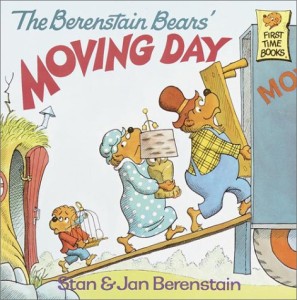
"Moving Day" by Stan and Jan Bernstein (Image from: Amazon.com)
By Carolina Pichardo
Although adults can deal with the stress and changes that come with moving into a new home, children will probably tell you a different story.
Their toys, furniture and clothes are missing. They’ve said goodbye to everything that’s familiar to them, including best friends, parks, school and the familiar surroundings of their neighborhood. Depending on the age of the child, this could all be a very frightening and stressful period.
One of the simplest, and probably easiest way to prepare and facilitate the transition for your child is to connect their moving day experiences through a story. This will not only change their perspective, but can answer several questions and allow them to relate to someone their own age who had a similar experience. Whether it’s a concern about making new friends, or what to do with the ones they’re leaving behind. Also, understanding that moving away doesn’t mean that they’ll have to change anything else about themselves.
Surely, there’s a lot that your child will like to talk about. So before the moving companies arrive, why not be ready to start your new adventures with the following books.
1. “Moving” by Fred Rogers (Ages 2-6): If it has to do with neighborhoods and friendly neighbors, Mr. Rogers has it covered. This book helps kids understand the process of moving and eases their worries and fears by showing them the bright side of everything that’s happening, from the confusion of packing, saying goodbye to the people and places they love, to making new friends.
2. “I Want to Go Home” by Sarah Roberts (Ages 3-5): “Sesame Street” is where the air is sweet and friendly neighbors meet, which is what Big Bird misses the most when he goes on a trip to the beach to visit Granny Bird. It seems that everything reminds him of his friends back home, until he meets a boy named, Wally. Wally has his own special cave, which reminds Big Bird of his friend back home, Mr. Snuffleupagus. After a while, Wally and Big Bird begin to share more moments together and enjoy the rest of the vacation playing games, sharing a popsicle, and becoming the best of friends. Certainty a sweet tale for younger kids as your family gets ready to move.
3. “The Berenstain Bears’ Moving Day” by Stan and Jan Bernstein (Ages 3-6): When it comes to anything pertaining to kids, these bears are the specialists, and moving day is no different. This book marks the beginning of the family’s move to their new and now very famous tree house. Although it’s an exciting time for everyone, Brother Bear is hesitant and not sure if he’ll be able to make new friends.
4. “Maggie Doesn’t Want to Move” by Elizabeth Lee O’Donnell (Ages 5-8): Third-grader, Simon doesn’t want to move. He doesn’t want to leave his friends, favorite playground, old house or his understanding teacher. However, instead of telling his parents exactly how he feels, Simon decides to blame it on his little sister, Maggie. He then places her in his little red wagon and runs away to his friend’s house. His parents realize what’s going on and give the kids a tour of their new neighborhood, including the beautiful country park. Simon enjoys this very much and decides that he, er—Maggie, does want to move after all.
5. “Hey, New Kid” by Betsy Duffey (Ages 8-11): Being the “new kid” is a lot of pressure of a child. Children often ask themselves questions about whether they’re cool enough, or have the right skills? Will their ordinary life be exciting enough to fit into their new school? This is what happens to the new student, Cody. He decides that being a regular kid isn’t enough, and prefers to be Super Cody. He tells his new friends at school that his father is FBI agent, his pet emu, and of course—his great rollerblading skills. The kids are fascinated with his stories, and Cody doesn’t think much about it. That is until someone decides to throw a skating party!
Moving is hard and adding anxious and scared children to the mix doesn’t make for a pleasant transition. With these books and a lot of open communication, your kids will understand the move better and probably even be excited about their new area, new home and new set of friends. It is also important to tell them that just because you are moving, it doesn’t mean their old life is gone…only that new experiences await them.
June 21st, 2010 by
Admin
Categories:
design and decorate,
Do It Yourself,
exterior projects,
Home Improvement,
interior projects,
Moving,
Moving Day,
Moving Industry,
Plan Your Move,
Real Estate,
Relocation,
Saving Money Comments:
No Comments » 
Shedding Some Light on a New Room
By Kathy Woodard
Congratulations, you have survived the moving process to your new home! Although your kids accepted the moving news, they may be feeling less than settled in — as well as a little scared and uneasy once they are in their new home. One of the best ways to help kids make the transition after a move is create a space that is all their own by decorating their room. This will help them create a new look for their new room, as well as offer a creative outlet and a way for them to express themselves.
Start talking about decorating your child’s new room before moving day. Allow the excitement to help with those difficult transitions. Brainstorm ideas with your child, so you can get an idea of what appeals to them!
As soon as you are settled into your new home, start making decorating your kids rooms a reality. Take them shopping in your new community to get ideas for their room décor. (This is a also a great way for them to start feeling more at home)
Create a plan with your child, not for them. You want to make sure your child is involved in the whole process. This way they will feel a real kinship with their new space, and taking ownership goes a long way toward getting over that homesick feeling for all they left behind at their old home.
Pick a theme and a color scheme with your child. This doesn’t have to be some cutesy cartoon character theme or anything commercial at all. Perhaps your 10-year-old wants a chic, stylish room painted in pinks and greens; while your toddler may want fish and mermaids. As soon as you identify your theme, write it down and have them make a drawing or list of what things they would like included in their room. Make sure they include the necessities like window coverings and storage, in addition to the beaded curtain they want as a closet door, or the disco ball they will insist will make a great bedroom lamp. Sit down together, and make choices as to what will be acceptable to you, and what you can afford.
Come up with creative ways you can make the room happen within your budget, and work on these home improvement projects together. Some money saving ideas?
• Sew two sheets together on three sides and insert their old comforter for an inexpensive duvet cover.
• Use paint to create the feeling in the room. Whether your child is quiet and shy, outgoing and vivacious, or somewhere in between, the right color scheme for their personality will make the difference between the room being a success, or a dud! Paint is cheap; use it ravishingly to create a fantasy for your child.
• Visit dollar shops for accessories for your child. Fun picture frames, storage baskets in bright colors, and themed toys to use for décor are all easy finds that will save you big money. Remember, stick to your theme!
• Craft and fabric stores are a gold mine for the DIY decorator. Use iron on hem tape to create simple curtains and throw pillows. Use craft foam in your rooms colors to cut out shapes that can be used as 3-D art on the walls.
• Visit thrift stores and yard sales to find rugs, lamps and accessories that can be renewed with a quick update of paint or fabric.
Finally, make a party of decorating day. Assemble all the ingredients and implement them all at once, instead of gradually. This gives a dramatic effect and underlines the importance this new space has for the child. Allow them to invite a couple of their new friends over to celebrate, or make it a family affair with a barbecue or the child’s favorite dinner.
Decorating for kids when you move to a new home can be a fun and a healthy transitional experience for both parent and child. Take advantage of the situation to make it a bonding experience you will both remember.
Want free home and garden ideas? Kathy Woodard is an author, columnist and home decorating expert. Read more articles written by Kathy on the websites TheBudgetDecorator.com and DecoratingYourSmallSpace.com.

Hello there! It's so nice to meet you.
By Carolina Pichardo
Now that you’ve moved into your new home, unpacked the boxes and started to settle in by putting everything in its proper place, it’s time to get to know your new neighborhood and meet your new neighbors.
Getting to know your community is very important, especially if your family was upset the second the moving company arrived. Not all your neighbors will be like Mr. Rogers, so take the time to get to know them. Whether they’re noisy, pleasant or always getting into your business, these people will define how happy you’ll be in the years to come.
Although it might be a little difficult to get the process going, it can actually be a lot of fun and a great way to learn about the amenities of your new location. There are several places to begin, such as your child’s school or your local community center, but the Internet and local businesses are also great resources. The main thing is to get out there, make an effort and we promise that you be on your way to having a beautiful day in your new neighborhood.
Start with Family and Friends. If you’re fortunate enough to have family and friends in the neighborhood, then take advantage of that direct connection. These are people that already know the best schools, supermarkets and how to get around the area, so don’t be afraid to pick their brains. This is also a great opportunity to meet their friends, as well as a way for them to show you around in your area. Chances are that they’ll be more than happy to show you the ropes!
Community Events and Publications. Most towns and cities, regardless of size, have a local newspaper or community board available. These provide great events and activities, such as fundraisers, picnics and parent conferences that could help get your search started. Because of the scheduled meetings, forums and contact lists, this is the simplest and most organized way to meet those living in your neighborhood.
Social Networking and the Internet. These days, the Internet makes meeting new neighbors easier than ever. Social networks, such as Facebook, Meetup.com and Twitter, bring together neighborhoods with a common interest, cause and skill. Although joining these requires a more proactive approach (researching groups, participating in forums, etc.), it’s the best way to find local “niche” groups. There is something for everyone, including knitters, actors, writers and Karaoke singers.
Coffee Shops, Bars and Small Businesses. Despite the Internet, coffee shops, bars and even laundromats are still the most effective and best spaces to meet new neighbors. That’s why it’s important to walk around your new community and learn about the businesses that keep it running. These aren’t just resources that you share with others; they’re also the life of your neighborhood. You’ll be surprised at how much you could learn by just waiting in line, enjoying a favorite drink or even finishing several loads of laundry.
Hosting Your Own Party. Often the Internet, community events and newspapers don’t get you the results you want, which means that you’ll have to take the matters into your own hands. If this is the case, then go ahead and have your own soirée, such as a housewarming party. Invite other families, co-workers, and the few people that you’ve already met from your new neighborhood. More than likely, these people will bring along other friends and before you know it, you will have a large network of people under your roof. Usually, all it takes is for you to open your home so that others could do the same.
Give It Time. Like all communities, your new home has an identity and personality of its own. Large cities, for example, have a different beat than the smaller towns. That’s why, regardless of what approach you decide to take, remember that meeting new neighbors does take time. You’ll find that some people are very easy-going and open, while others just aren’t that simple. However, continue to participate and remain vocal in the community, and you will soon be attending children’s birthday parties, school rallies and other cultural events.

Annie Rice's Home Listed at $3.3 Million-Image from the LATimes.com (Photo Credit: Jeff Atkins)
By Serena Norr
Welcome back for another addition of The Celebrity Beat: Relocation.com’s real estate report. This week James Bond and Jon Stewart purchased new homes; while Anne Rice and Jesse James are looking for sellers. From duplex lofts to homes on the beach, which space peaks your interest?
• Daniel Craig (one of the James Bond’s) Scores TriBeCa Home for 1.9 Million
Double 007 just scored a luxurious 1,121-square-foot pad for $1.9 million. The penthouse (purchased in cash!) is located in the über hip neighborhood of TriBeCa that includes one bedroom and two bathrooms. According to the Real Estalker, this hefty price tag means that Mr. Craig is paying about $1,700 per square foot, along with monthly condo charges of $2,265! The duplex loft features three terraces, a dining area with 20-foot ceilings, hardwood flooring, a balcony and two closets (one of which is a walk-in).
• Jon Stewart Buys Home in New Jersey for $3.8 Million
According to Housing Watch.com, political satirist and “Daily Show” host, Jon Stewart recently purchased a new home on the Navesink River in Red Bank, New Jersey. The 4,999-square-foot Victorian home features 1.3 acres of land located on the river with what we all can assume features some amazing views of the nearby landscape. Other details include a wrap-around porch with a deck, a swimming pool, two-car garage and a boat house.
• Anne Rice’s Home on the Market for $3.3 Million
Author Annie Rice has listed her six-bedroom home for sale. Built in 1995, the California residence features an outdoor pool, a garden with fruit trees, an air-conditioned garage, a separate dining area and an updated kitchen, seven bathrooms (yup, seven!), a private living area for a housekeeper or maid and a detached two-bedroom home for guests with a full kitchen. Rice is selling her home for a smaller pad, but stated that “I’ve loved it here in Thunderbird Heights with views of the valley and the mountains.”
• Jesse James Puts Sunset Beach Home on the Market
Much has been mentioned about motorcycle manufacturer and reality star, Jesse James from the tabloids. Mr. James is also causing some buzz within the real estate industry as his $6.75 million dollar beachfront home was recently placed on the market. The two-floor Mediterranean-inspired casa features four bedrooms, a media/game room, an office, a guest room, a fireplace, a modern kitchen, an island bar and a three-car garage with a built-in space for tools and storage. The home also has a built-in security system and an outdoor area with a swimming pool, tiki torches, waterfall and a waterslide!
April 26th, 2010 by
Admin
Categories:
Home Improvement,
Mortgages,
Moving,
Moving Day,
Moving Industry,
Plan Your Move,
Plan Your Relocation,
Real Estate,
Relocation,
Saving Money Comments:
No Comments » 
The Picturesque California Sunset
By Serena Norr
As the second largest city in the United States, and the largest city in California, Los Angeles is renowned as a hub for glamour and entertainment, amazing weather, fine dining, attractions and breathtaking beaches.
This “City of Angels” is also home to some of the most immaculate real estate properties in the world with seaside residences, homes situated in the mountains, über modern architectural wonders and green design concepts. Although these housing options are plentiful, the area was hit pretty hard by the declining housing market, causing market price to plummet and foreclosures throughout the city. However, this area is now starting to see signs of growth with the rebound of home sales. Forbes magazine even named Los Angeles one of the top 10 metro areas in the U.S that is easing from the recession. Good prospects are up ahead and relocation.com is very excited to cover these Los Angeles bloggers who are on the pulse of what’s happening in this (once again) burgeoning real estate market.
As part of the popular Curbed network, the Curbed LA edition covers anything and everything real estate throughout all of the neighborhoods in the City of Lights. This up to the minute blog is certainly on the beat of what is going on in the market through their informative, but fun articles. The site also features breaking real estate news and deals, developments in architecture, home improvement and design concepts and real estates listings, accompanied by gorgeous pictures.You can also find restaurant reviews and everything about LA fashion on its sister sites-Eater LA and Racked LA for the complete LA experience.
Covering the Westside of Los Angeles and Downtown, the Los Angeles Real Estate Blog features the point of view of real estate broker-Keller Williams and his first hand insight of this residential real estate market. Since the blog covers Downtown, most of the listings feature apartments, condos and coops, along with location information (restaurants, area amenities, etc) room features, floor plans, pictures and even YouTube videos that give users an interactive tour. The site also provides informational articles such as green living, analysis of home growth in certain areas and parking in LA with a dead meter.
Crafted by the Valerie Fitzgerald Group, Los Angeles Real Estate Talk covers the market in Beverly Hills, Bel Air, Brentwood, Malibu, Santa Monica and the Westside of Los Angeles. This luxury real estate blog showcases the latest buying and selling trends and listings, as well an a great resource for informational articles about home inspections, construction sites, loans, mortgage rules and tax credits. Buyers and sellers should be sure to check out the blogs resource page, where they can check out a payment calculator, moving checklist, budget calculator, closing costs, and understanding investment, among many other informational (and free!) resources.
The Malibu Real Estate Blog gives users the “low down” on high end real estate from techy/real estate agent, Michael Gardner. Auctions, listings and pictures, sales and real estate developments throughout Malibu are all covered on the site through Gardner’s straightforward tone. He even lists his cell phone number, so that users can call or text him directly with their listing information or any questions.
A Manhattan Beach real estate blog, the Manhattan Beach Confidential lists properties on the market and compares current asking prices to its previous sales, which gives buyers a comprehensive analysis on property values and real estate trends. The reviews also include open house times, location information and a straightforward review of a homes appearance. Recent posting such as: “First, there’s that exterior, with its hard-on-the-eyes adornments. It just doesn’t work” are just some of the brutally honest remarks regularly found on MBC.
Blogger/real estate broker, Irina Netchaev breaks down the real estate market in Pasadena through her site, Pasadena Views. This informational resource covers architecture, home sales, real estate market reports, as well as information about loans and mortgages. Home owners can also list their homes here, or buyers can search through the up-to-date free listing section. The site also features foreclosures, market statistics and profiles on Pasadena’s neighborhoods such as average home price and amount of time a place is listed on the market. The site also has a personal touch with Irina’s real-life stories of the buying/selling market, advice and insider secrets.
Covering Bel Air, Beverly Hills, Brentwood, Los Angeles, Malibu, the Pacific Palisades, Santa Monica and Westwood, the Los Angeles Real Estate Voice provides a neighborhood-by-neighborhood breakdown of real estate listing and housing news. The blog also features these areas through their own profile pages, as well as through lifestyle articles covering local restaurants, where the best schools are and an interactive video section where experts give their opinions on real estate in these markets.
Looks like brighter days are coming for Los Angeles, as the market is showing signs of some real change. Check out some of these blogs to stay up-to-date on current trends, real estate listings and industry news as they happen—we know we will!